We left Tréguier and headed to Guernsey to fuel up and pause the Schengen clock for a few days as we watched the weather for the Biscay. Not much to report on Guernsey as we were on the quarantine dock for two out of our three days there, due to COVID protocols and our somehow not getting our test results back on our US phone numbers. But we finally got it all sorted and had a day ashore to scurry around and look for parts. (Not complaining, quarantine was free and we very much appreciated being forced to sit still for a couple of days). We were also amazed at how active the swimming community is in Guernsey. It was pretty cool to watch.
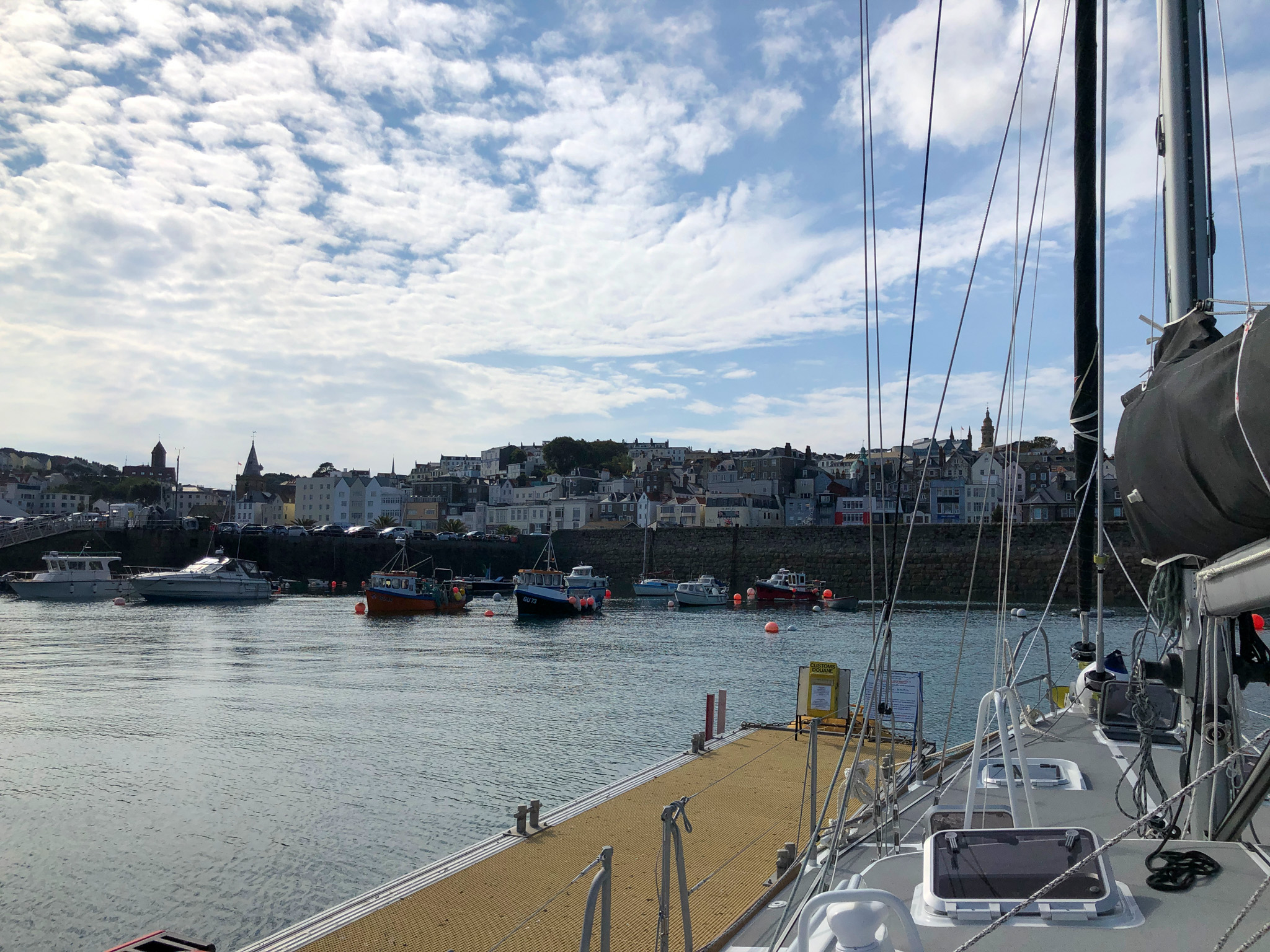
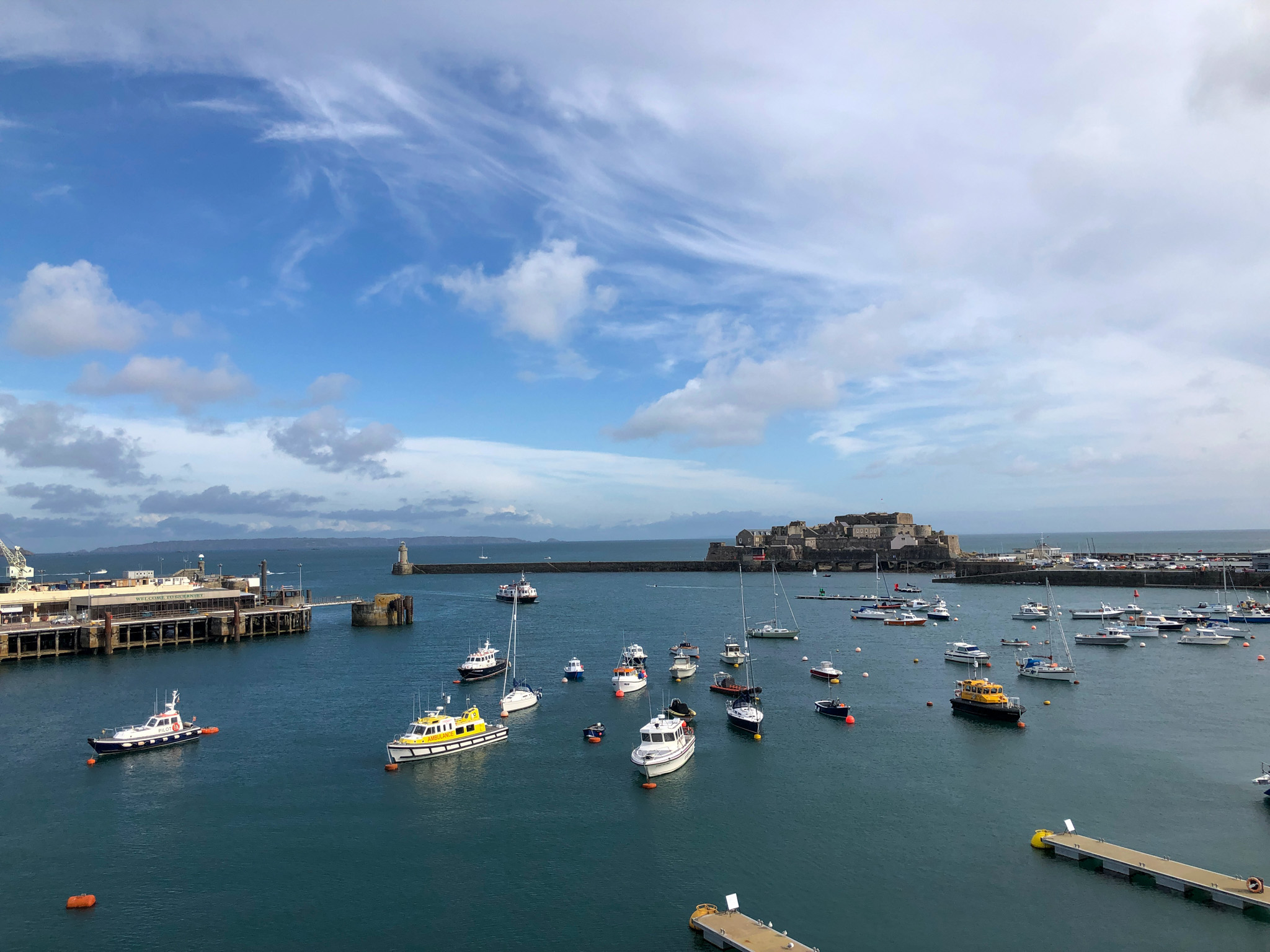
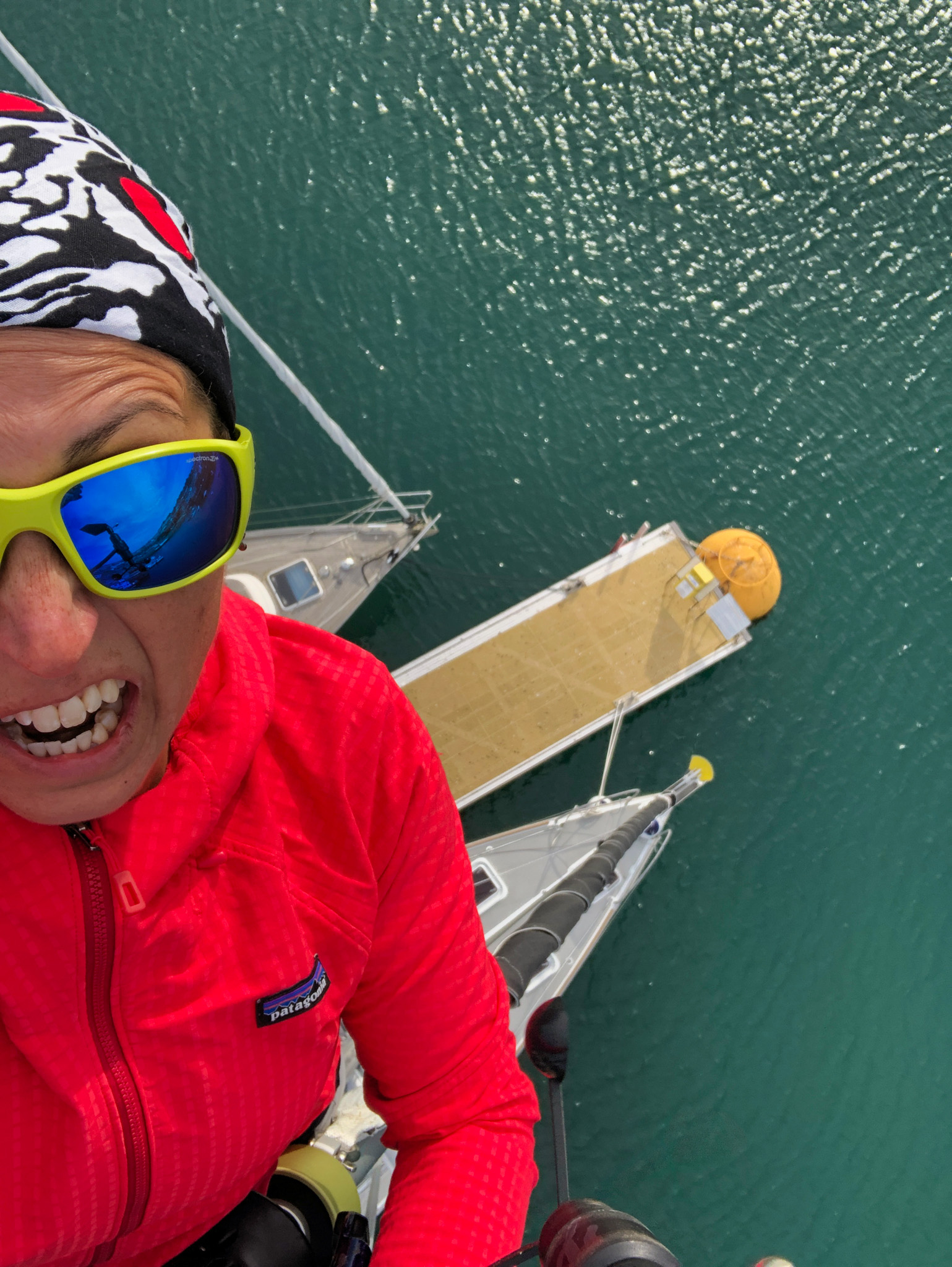
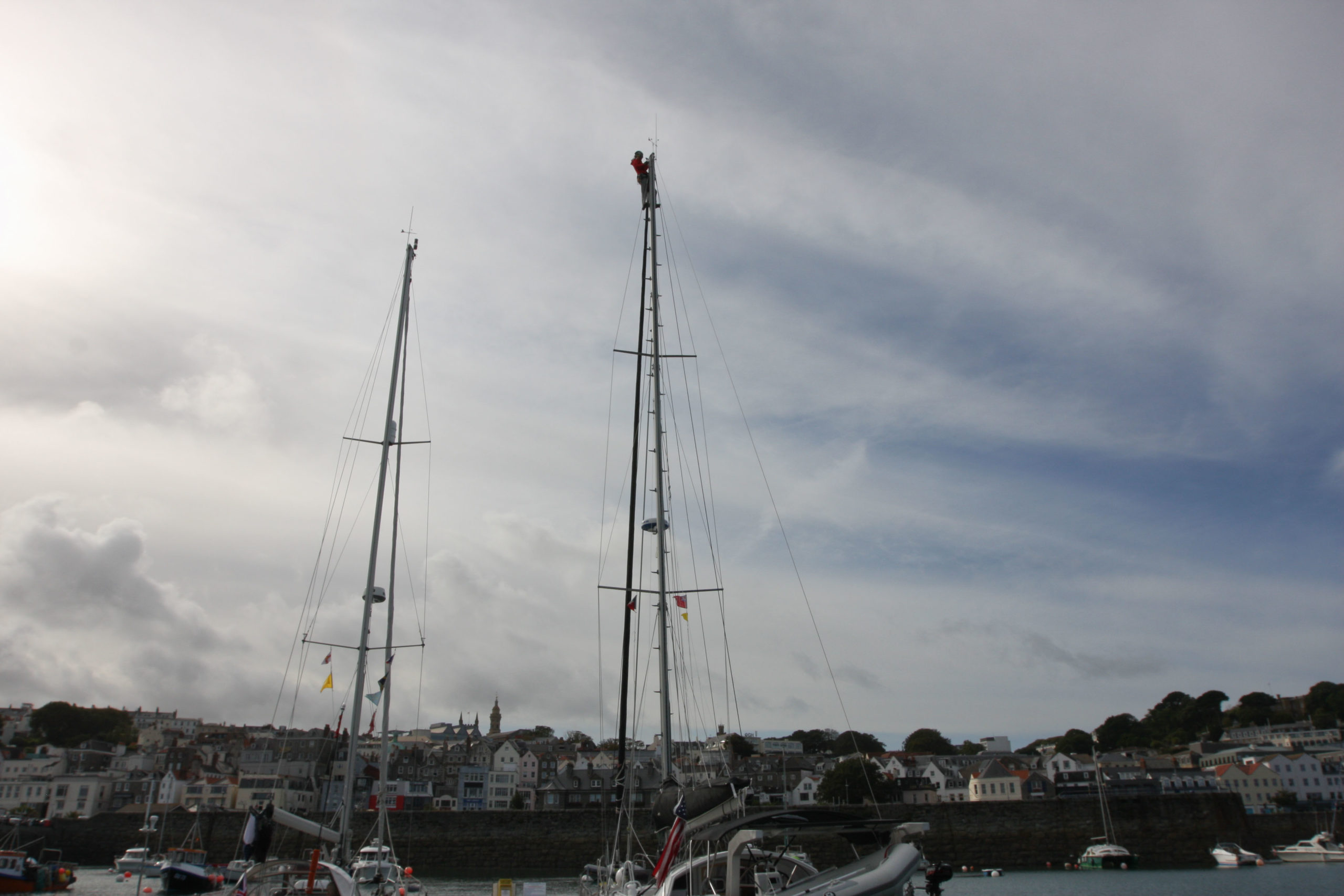
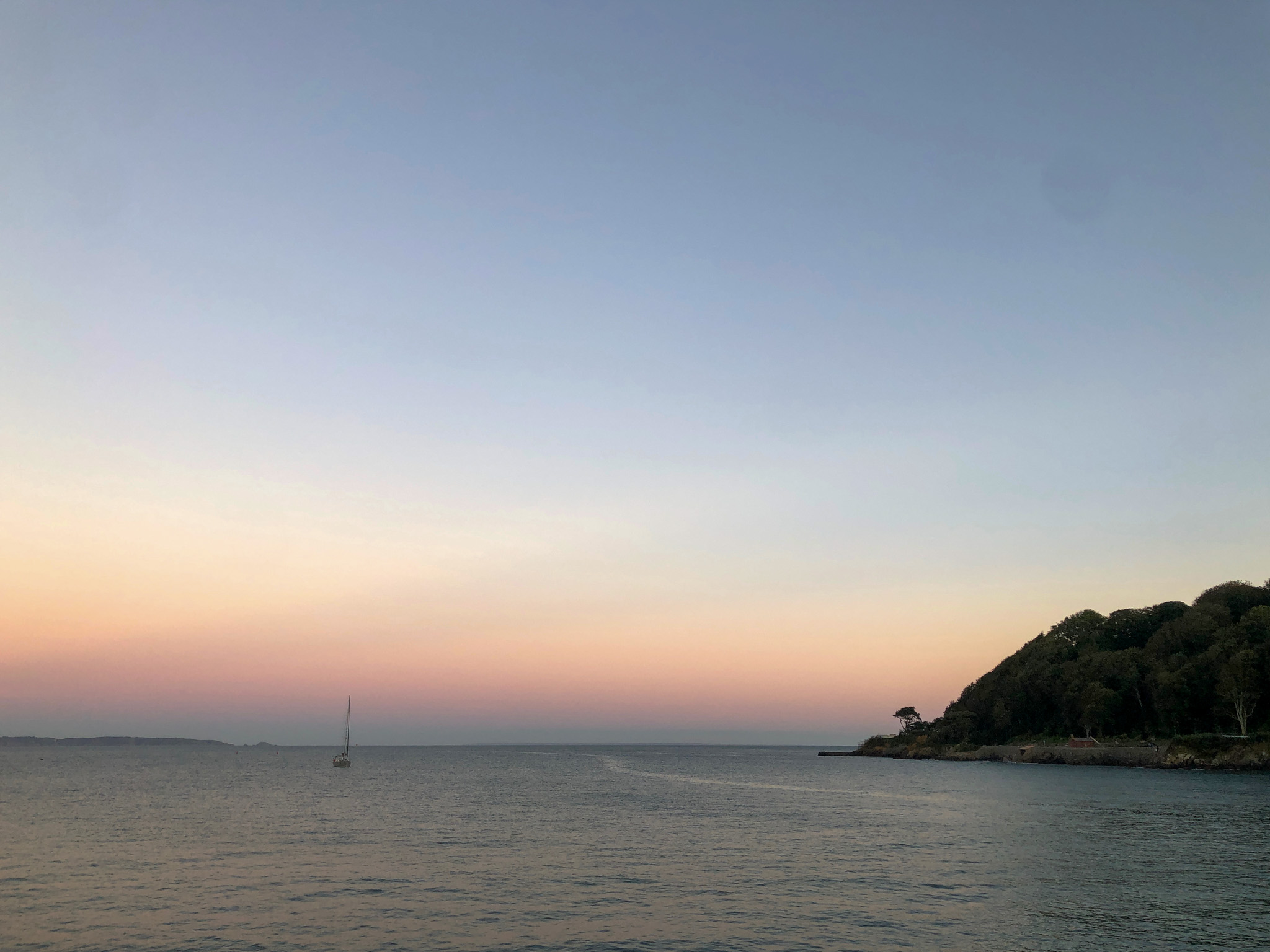
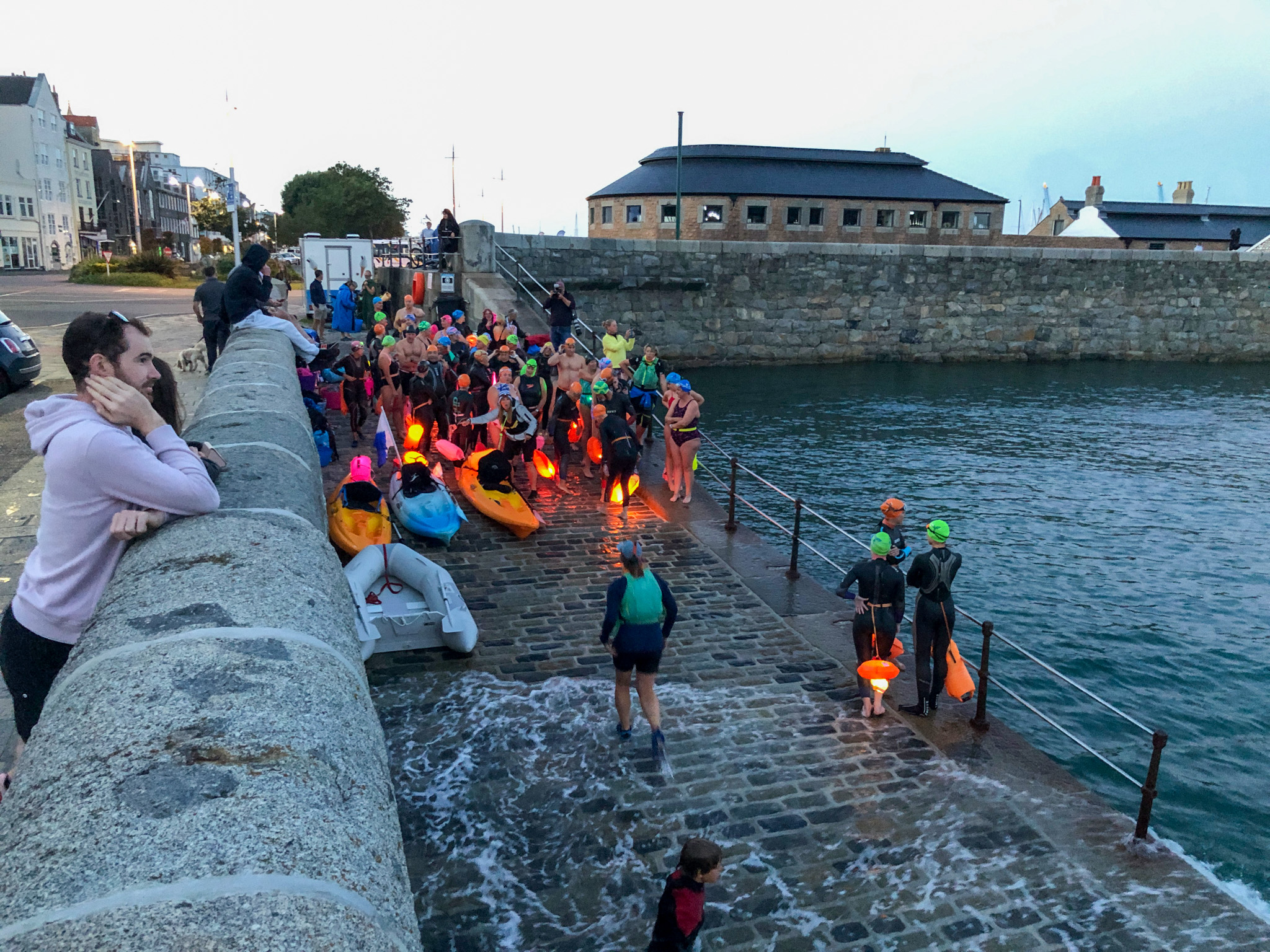
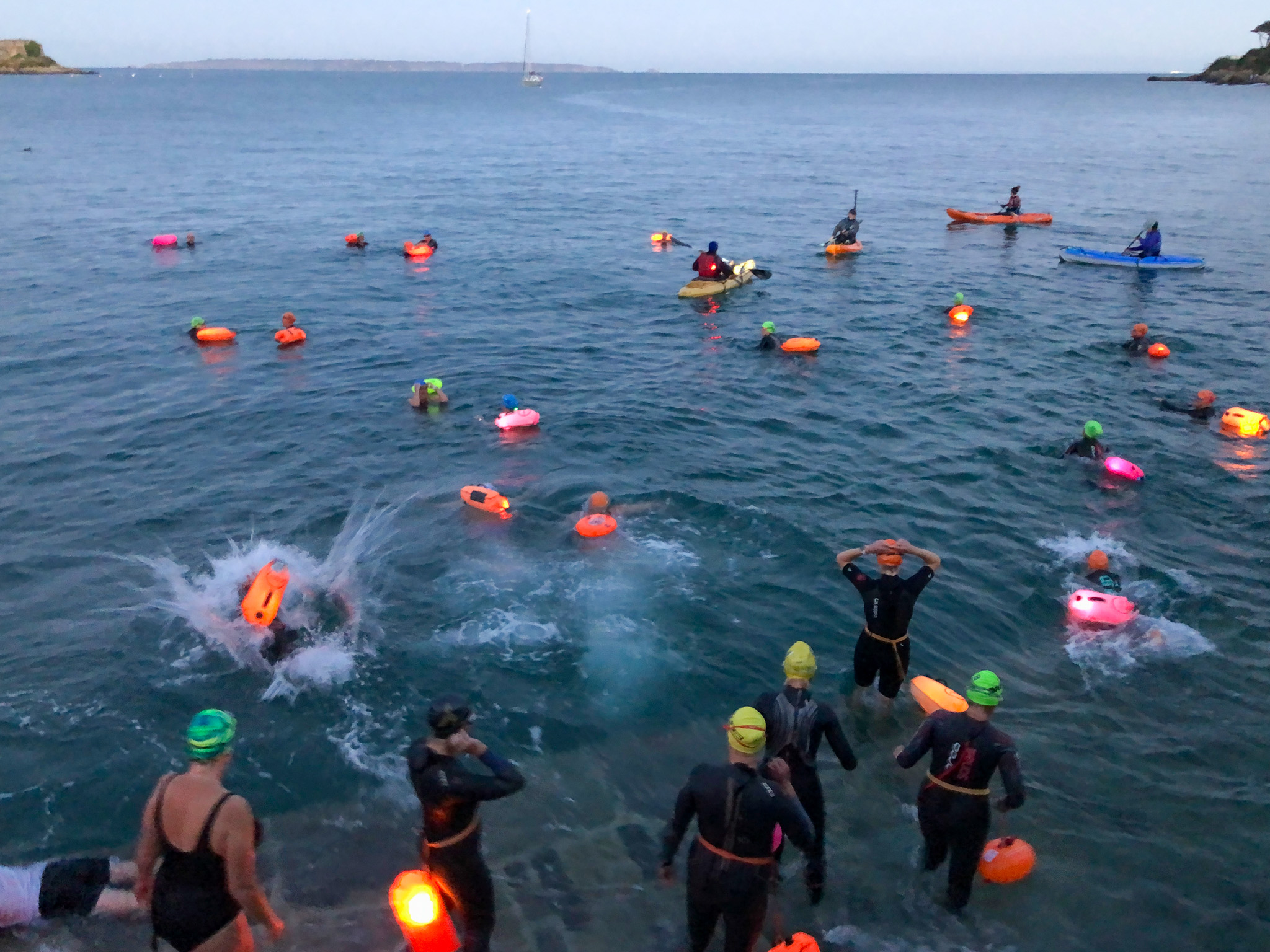
Finally it was time to cross the Biscay, or risk having a headwind – not advisable on this notorious body of water… a 300nm wide bowl open to weather blowing in from the North Atlantic. This would be our longest passage yet at just under 5 days, including a couple of pit stops along the way.
In “World Cruising Routes”, Jimmy Cornell writes, “Throughout history mariners have dreaded sailing across the Bay of Biscay where the worst conditions are caused by SW gales. Southbound passages are therefore more difficult and leaving with a good forecast is essential.” And “Because of the abrupt change from the deep to shallow waters of the continental shelf, seas can become extremely rough even in a moderate storm. The situation is sometimes exacerbated by a high swell generated by a hurricane blowing thousands of miles away.” And further, “Towards the end of summer the frequency of gales increases and more attention should be paid to the forecast from the middle of August to the end of September when some of the most violent storms have been recorded”. And what time of the year are we trying to cross? Hmmm, end of September? . . . Thanks for the pep talk Jimmy.
Google “Boat Bay of Biscay” and look at the images, and you’ll see a good sample of the many faces this water can have. So the reason for our hustled departure of Northwestern Europe and dieseling our way halfway to Spain as fast as we can is a narrow forecast break in the weather. In hindsight, this was fortunate timing and it worked out. As has been said of Cape Horn, during a lull in the typically extreme conditions, it can be just like any other place. This was our experience in getting across the Bay.
We did have some fun with fog and tidal currents though! Here is a story that will have the experienced boaters among you shake your heads (Kids these days!):
As we head towards Brest on the Brittany coast, we are pushed along by a 3 knot favorable current. This is glorious of course, until at midnight when it reverses against us. Somewhere west of Roscoff we decide to tap out, bucking the adverse current all night. Motoring with a groundspeed of two knots for hours on end sounds pretty stupid. So instead, we make an approach to a completely unfamiliar anchorage in the dark and fog, a much smarter option.
This was the kind of boating with radar and chart plotter screens zoomed way in and with one of us as look-out on the bow, listening through the fog for the sound of waves breaking on rocks. Let’s just say the channel narrows significantly. There was a moment of disorientation. We did a 360° turn right next to a marker post mounted to the shallow sea floor. A smattering of moored local boats hove into view, including a famed RNLI Life Boat, apparently stationed there. We thankfully set the anchor, shut down and rack out for the rest of the night.
In the morning, we motor through the 1nm wide channel between Ile D’ouessant and the Kéréon light tower off the coast of Brest on the west tip of France but we see neither shore in the fog.

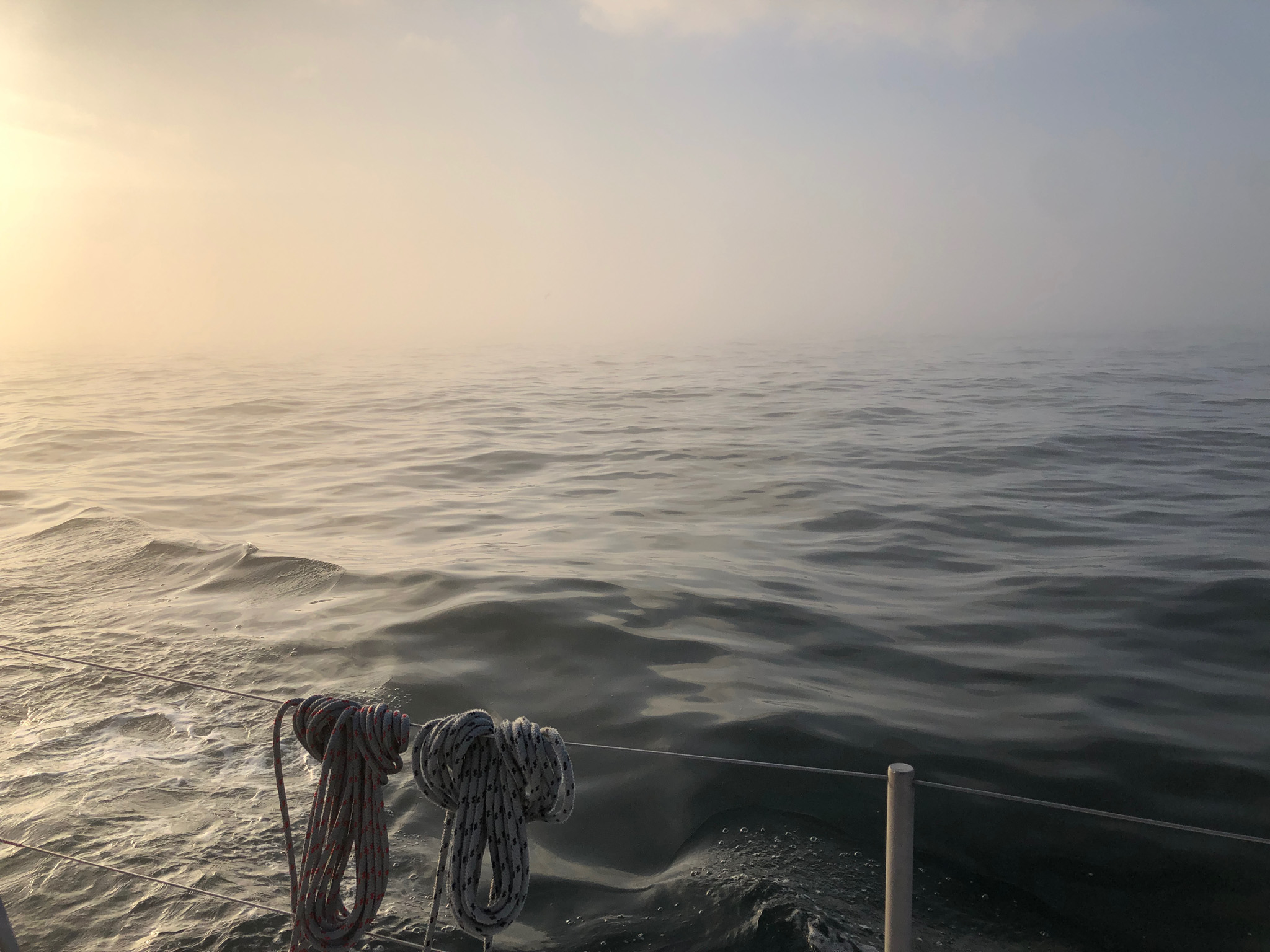
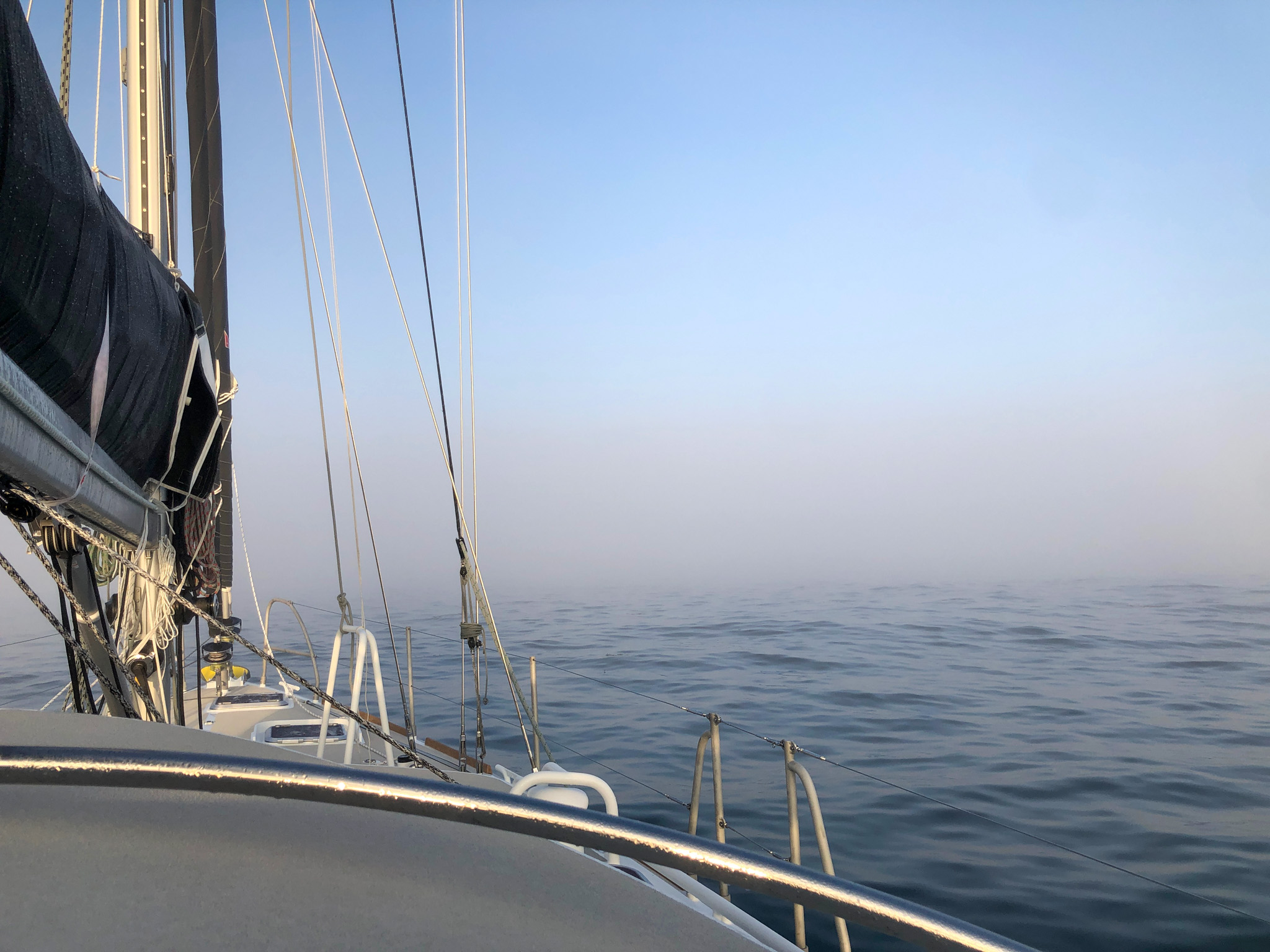
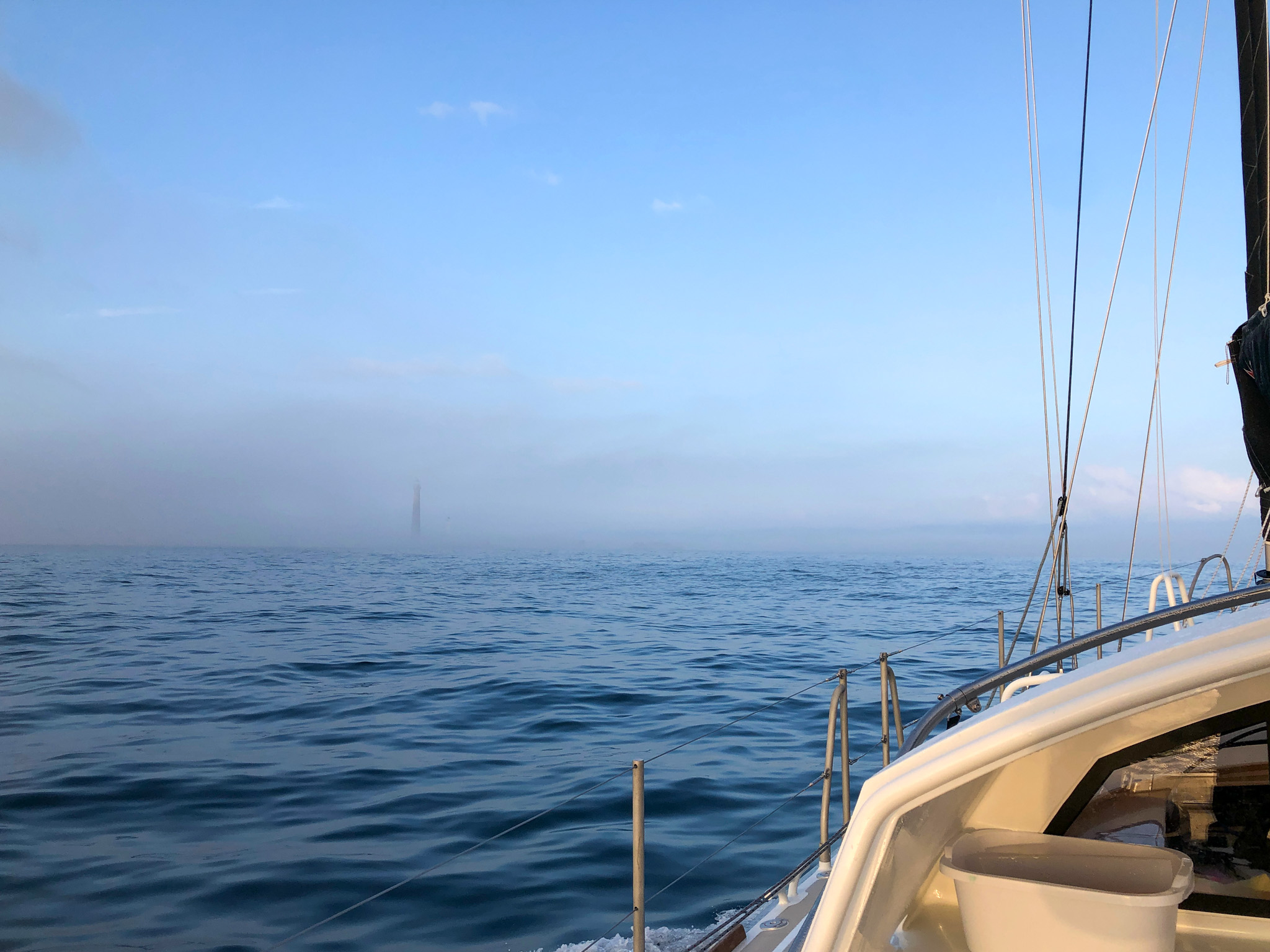
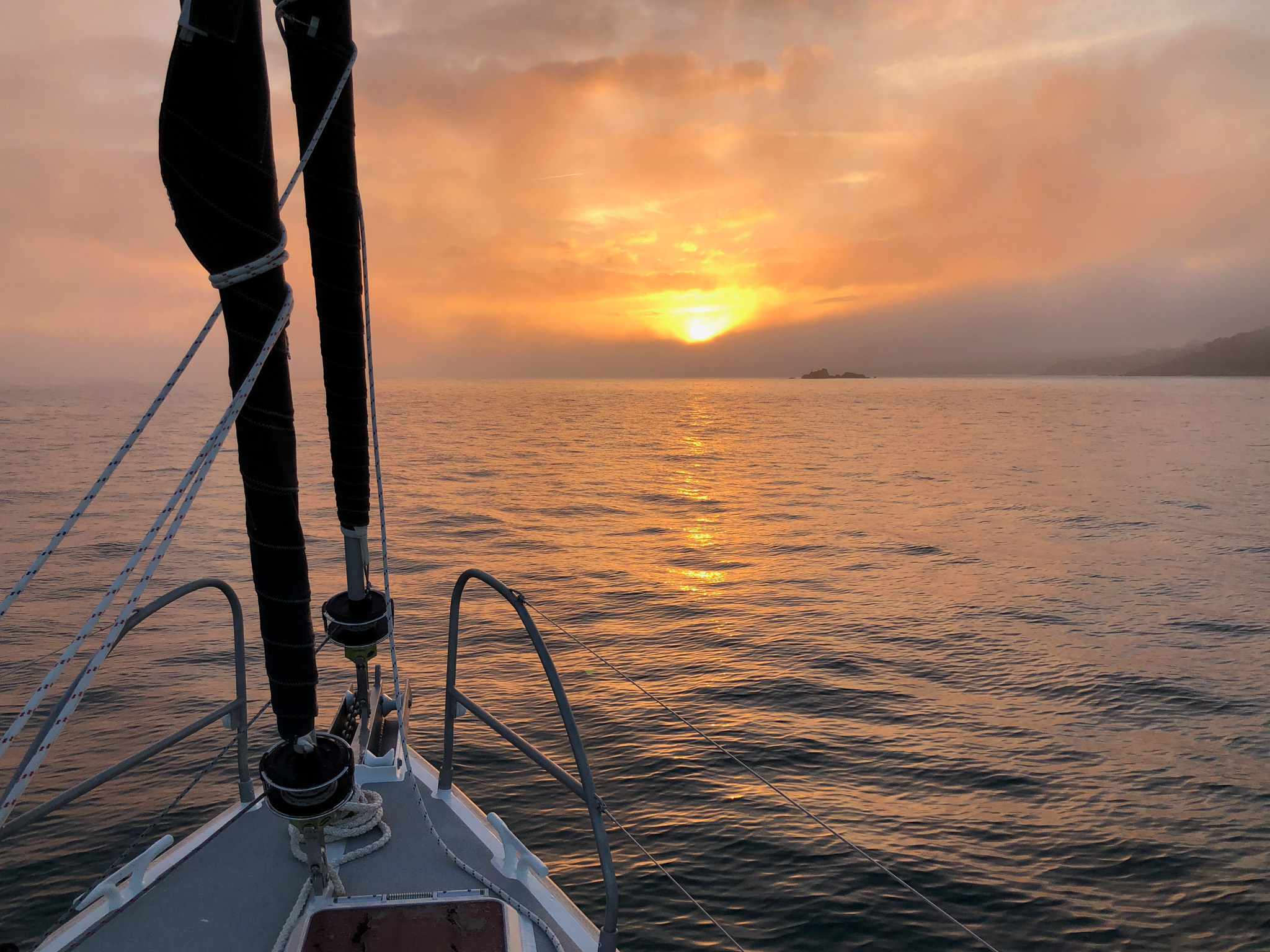
Once in the Bay, there was a steady stream of heavy commercial traffic in both directions. With no formal traffic separation scheme off shore, we managed to “Frogger” our way through the freighters and fishing boats. We started to realize that it keeps things interesting. Maybe even fun.
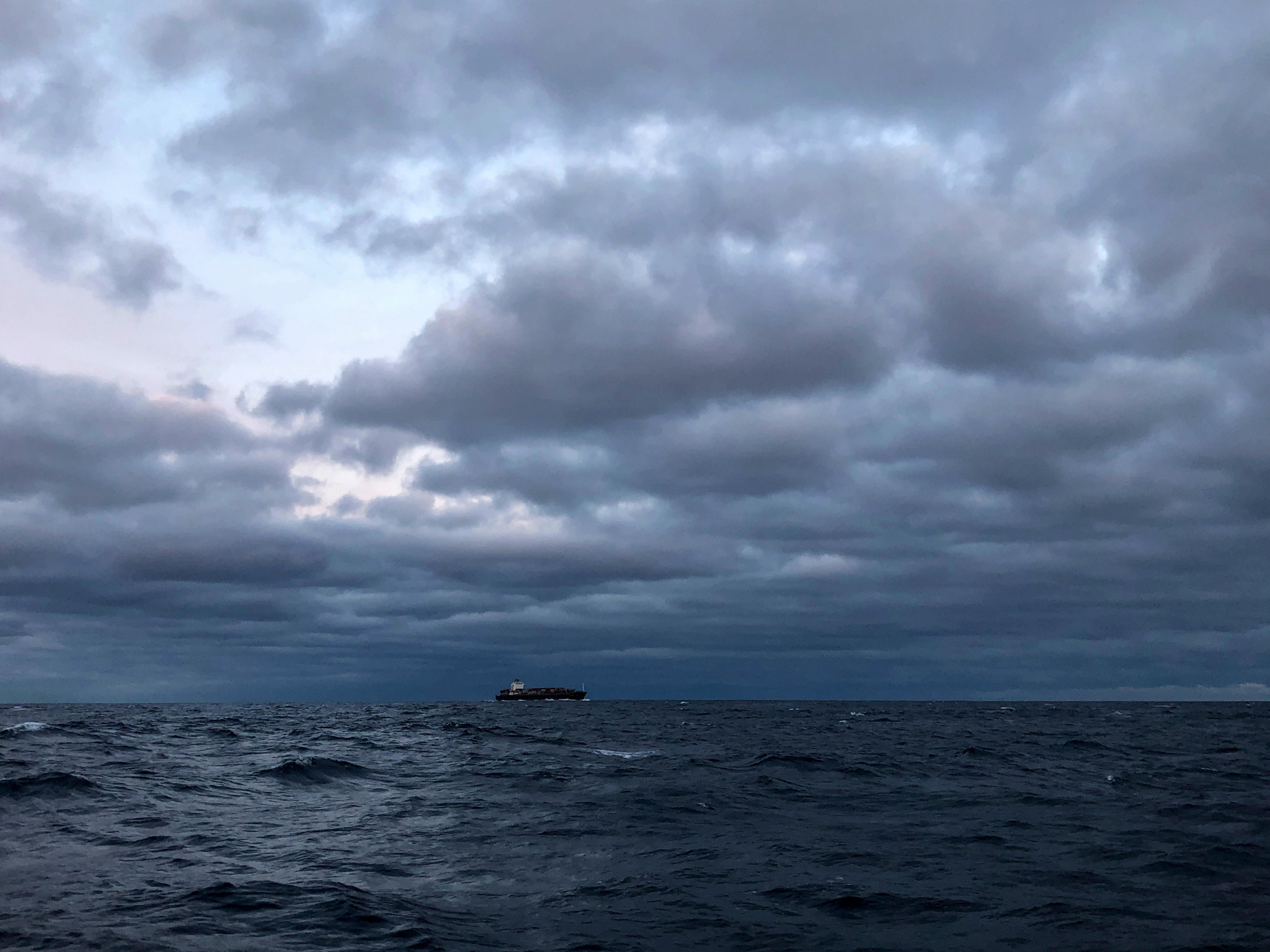
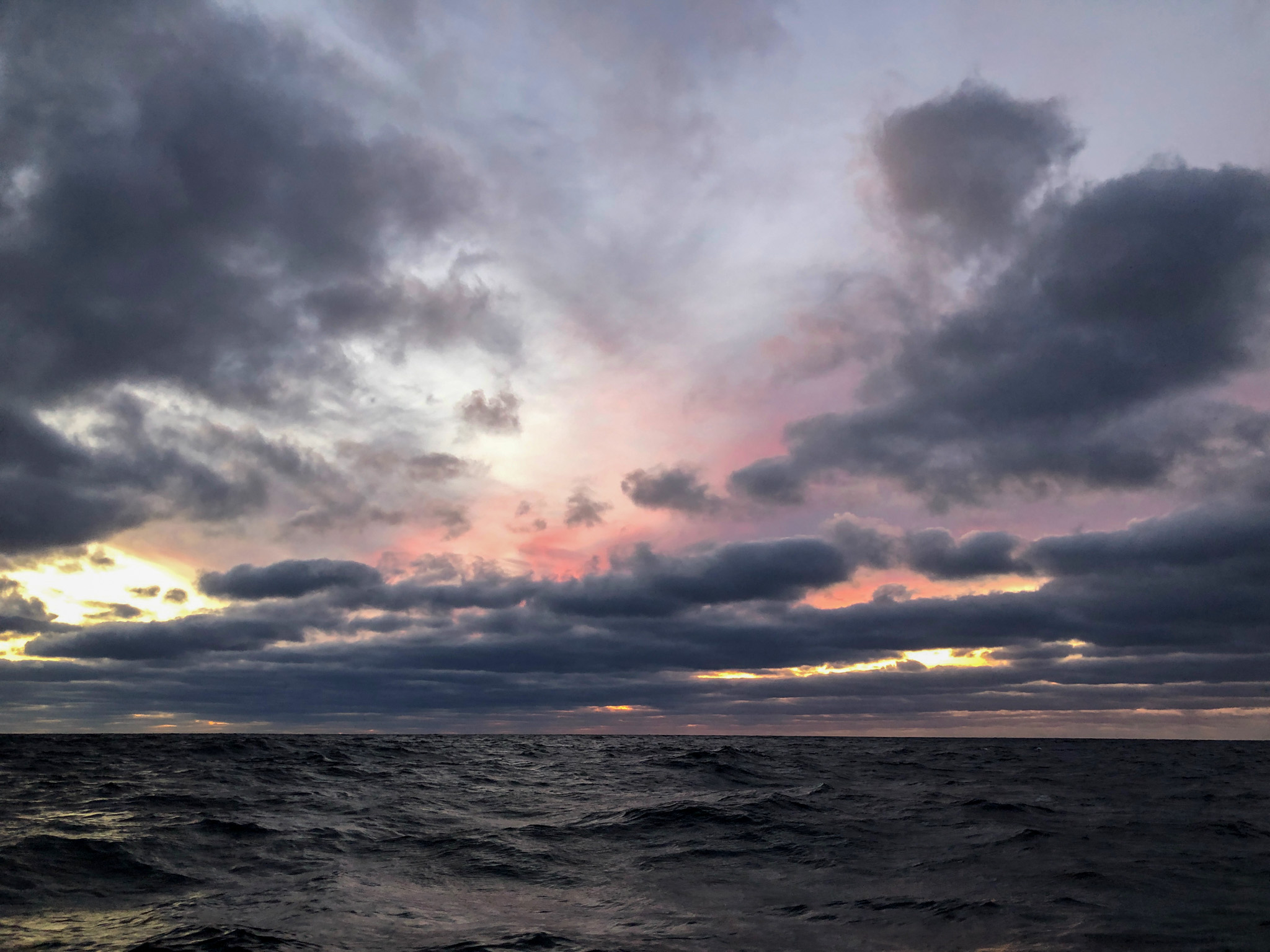
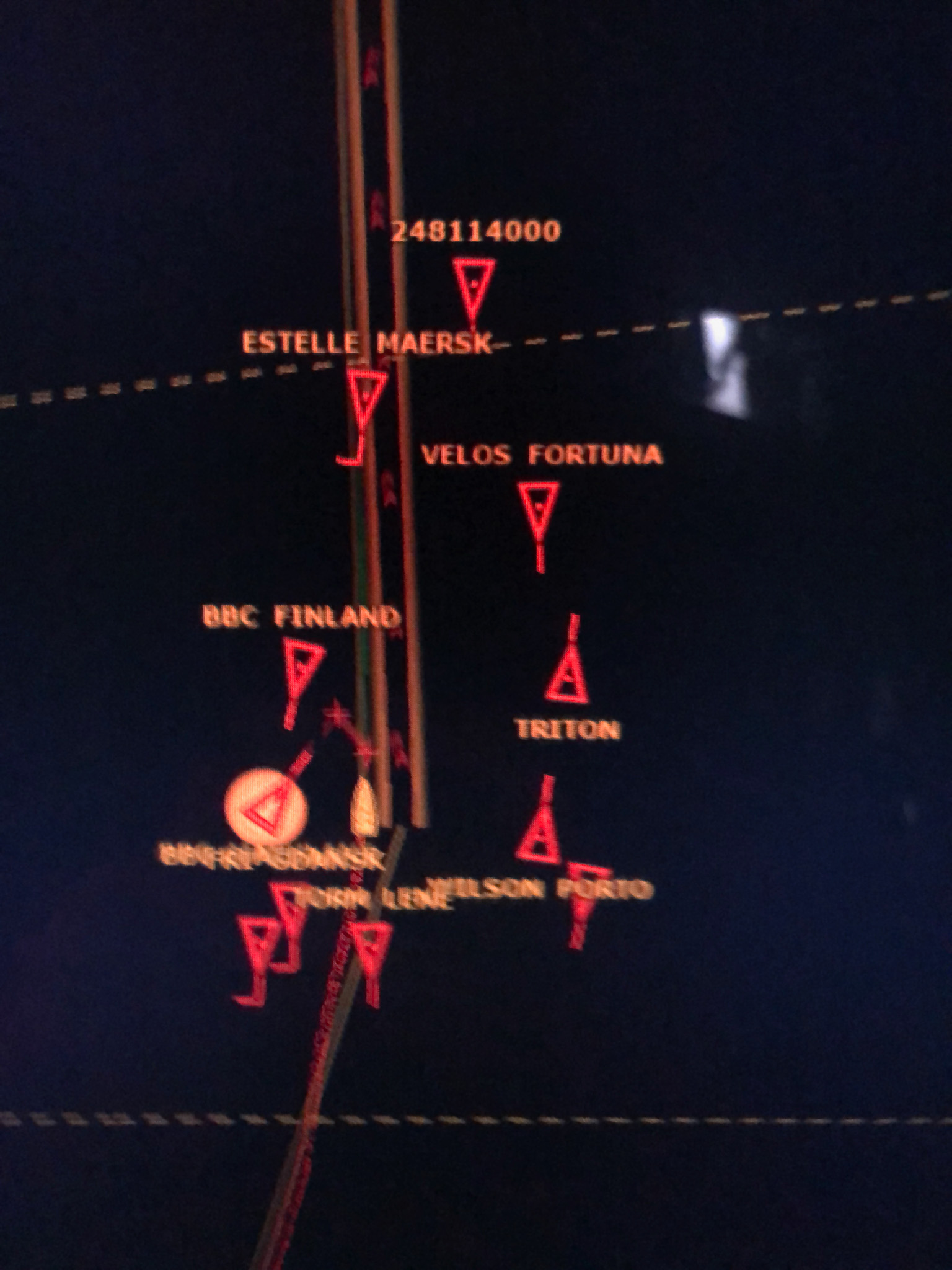
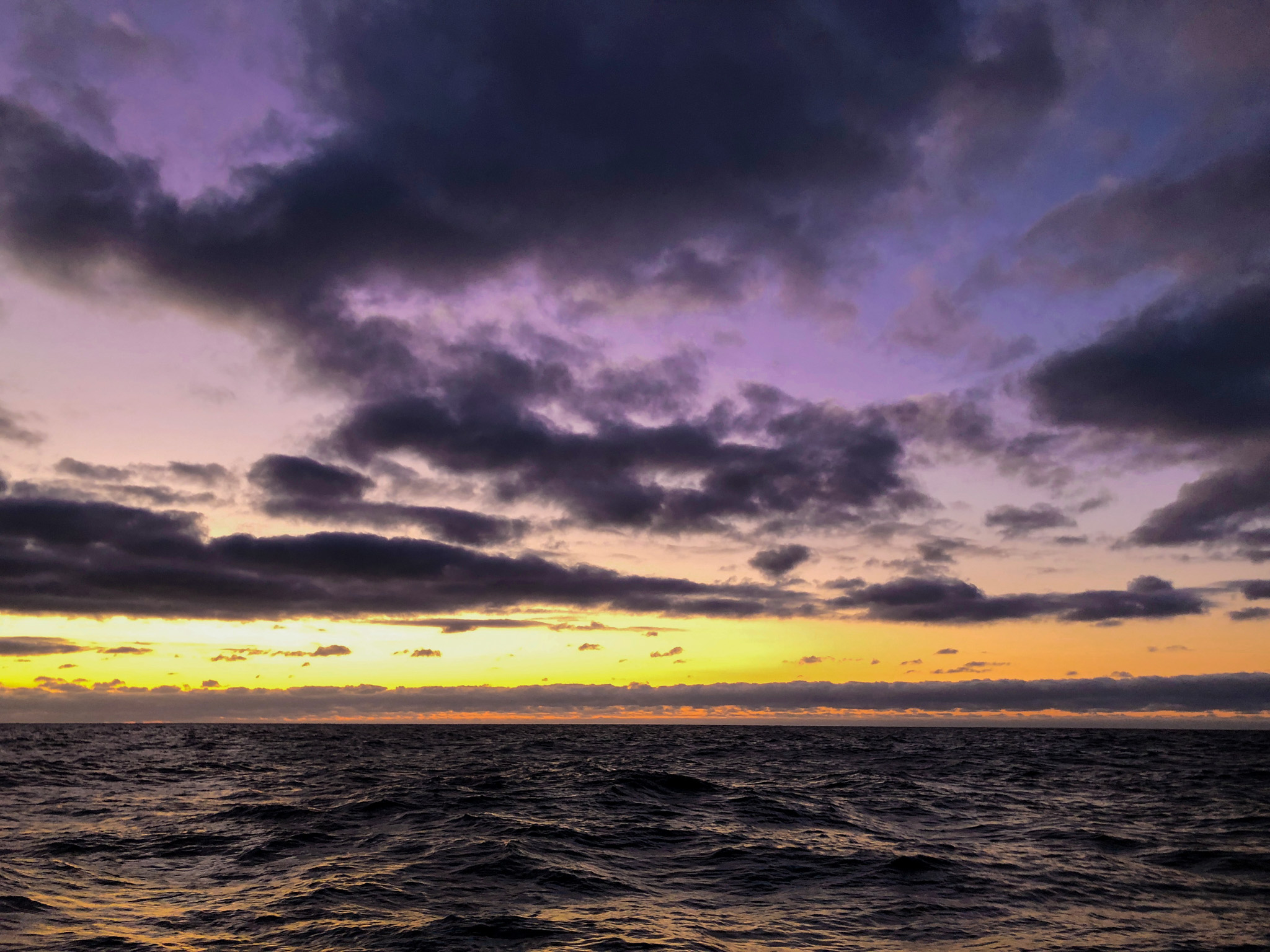
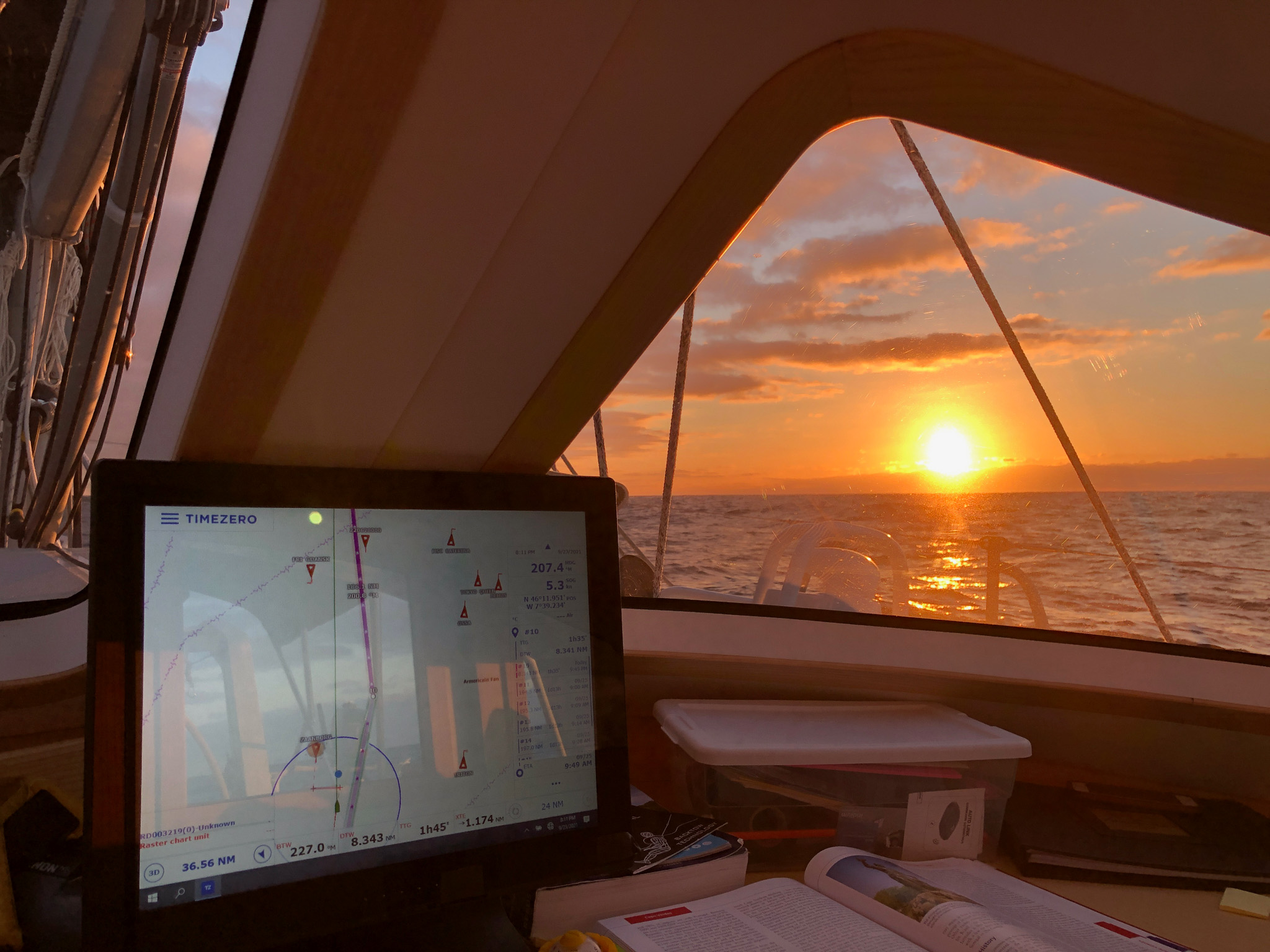
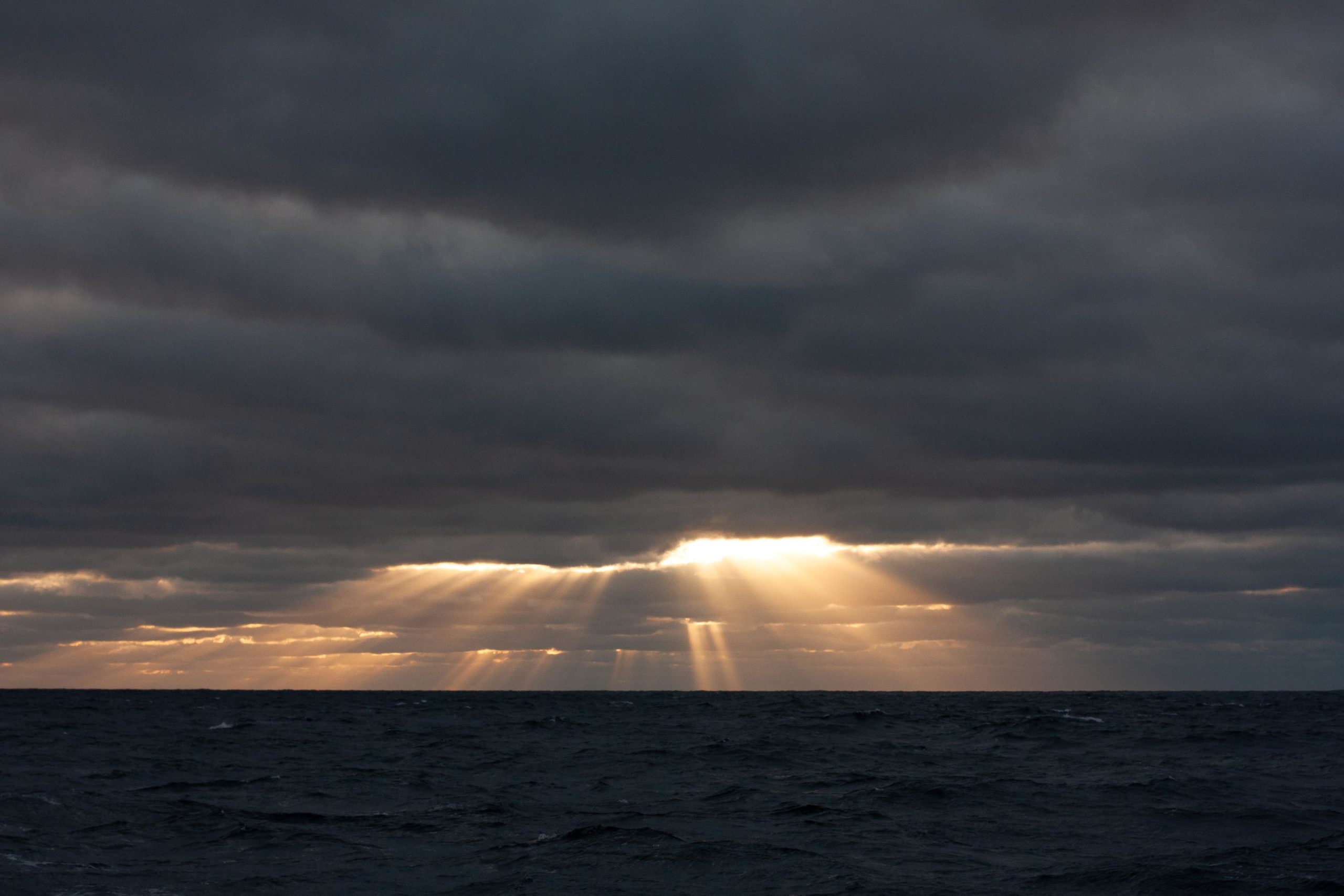
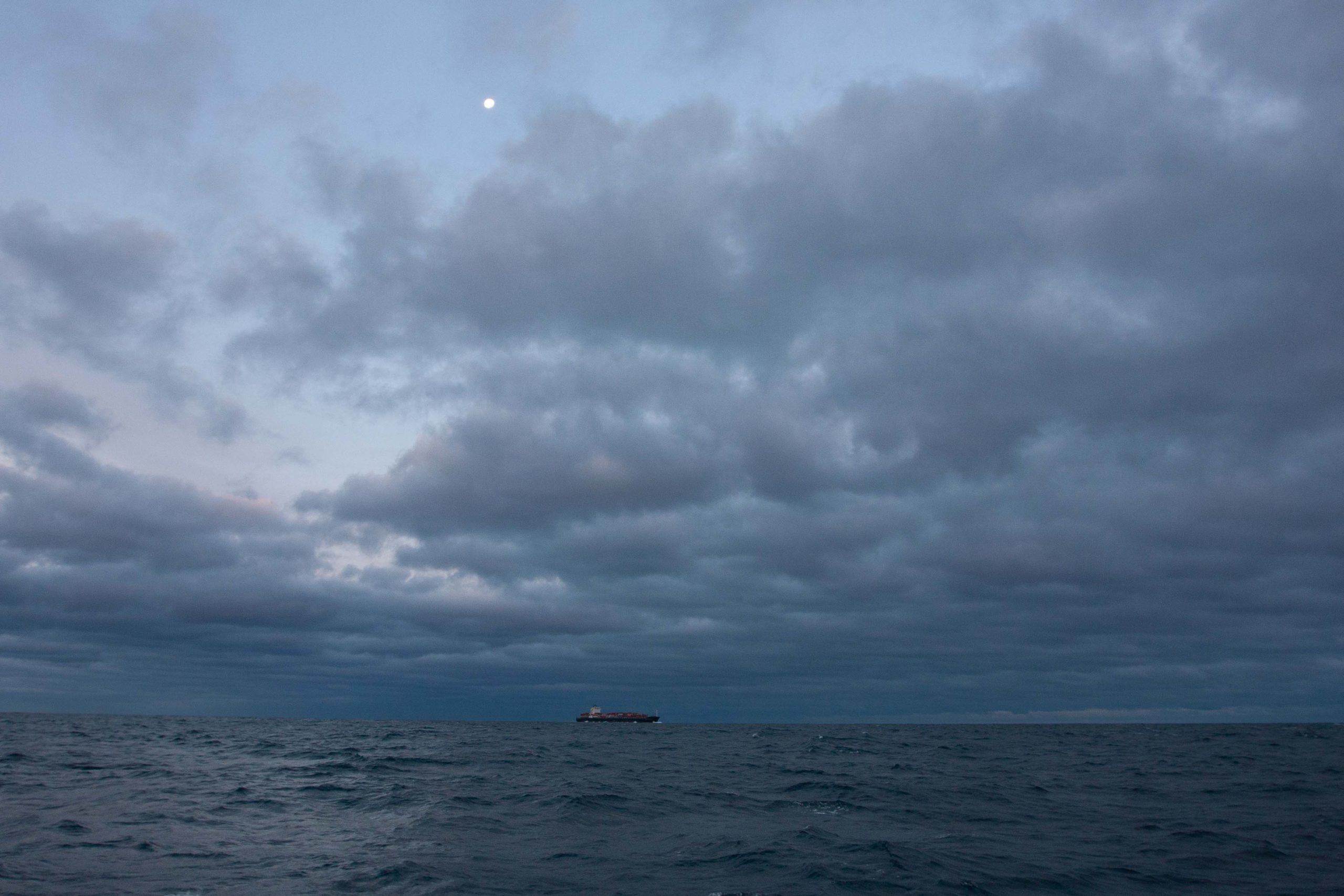
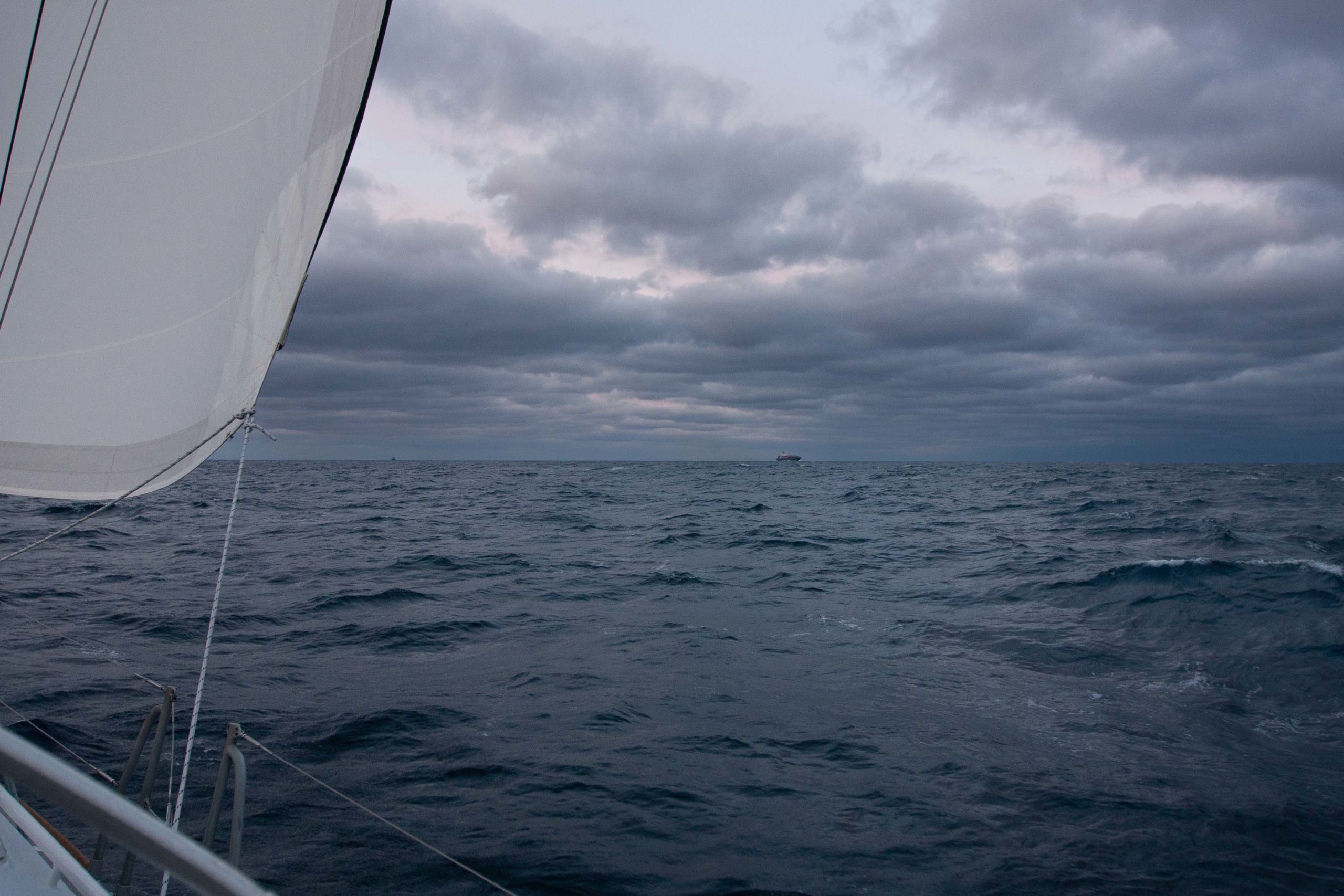
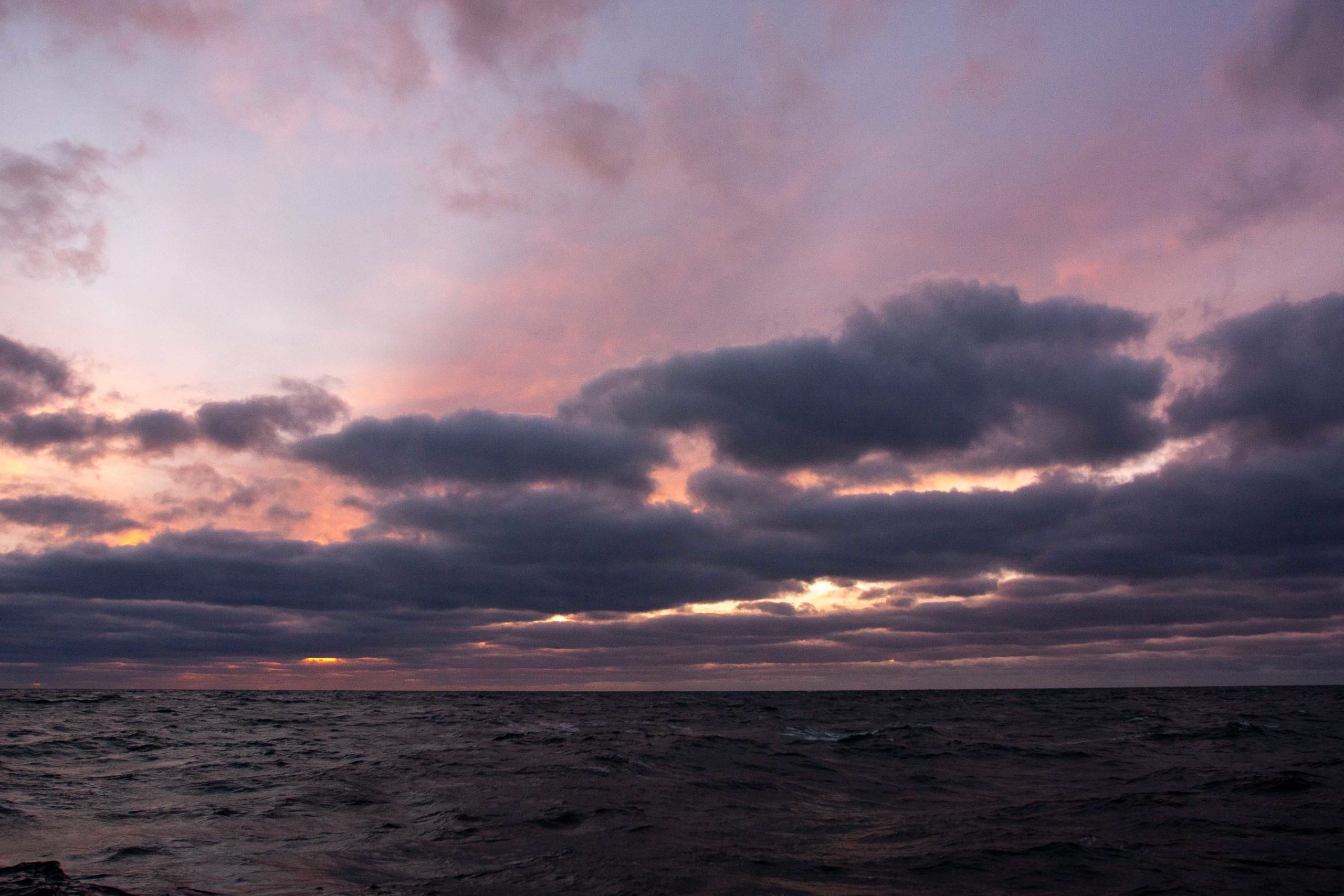
We spent nearly 3 days motoring, generally dodging shipping traffic and crab pots, enjoying our time at sea. Diana spotted a pilot whale from afar, and dolphins at night with phosphorescence take on the appearance of underwater glitter torpedoes. Finally on the 24th of Sept we were able to turn off the engine and sail. It was glorious. But short lived – on the 25th the engine came on again as we closed in on the NW corner of Spain, skipping A Coruña (where most cruisers land) and, with a big sigh of relief, set our hook in a quiet little bay called Camariñas at 7AM on the morning.
Camariñas proved to be the perfect place for us to start our visit to Spain. We wanted quiet, easy anchoring, with limited hustle and bustle. We were tired from the passage and the seemingly endless effort of starting out on a new boat. After dropping the hook, we collapsed into a long nap as the wind started to build from the south – the very SW gale we had hoped to avoid in the Biscay. Soon, kite boarders were zipping past Randonnée and taking some huge air – at least 30 feet in one case, and we rode out gusts exceeding 30 knots on our anchor, thankful to be in protected waters. It was a good real world trial of our ground tackle and it gave us confidence in the equipment. Nothing budged and we enjoyed watching the kite boarders cutting back and forth just beyond our transom, doing tricks for the camera.
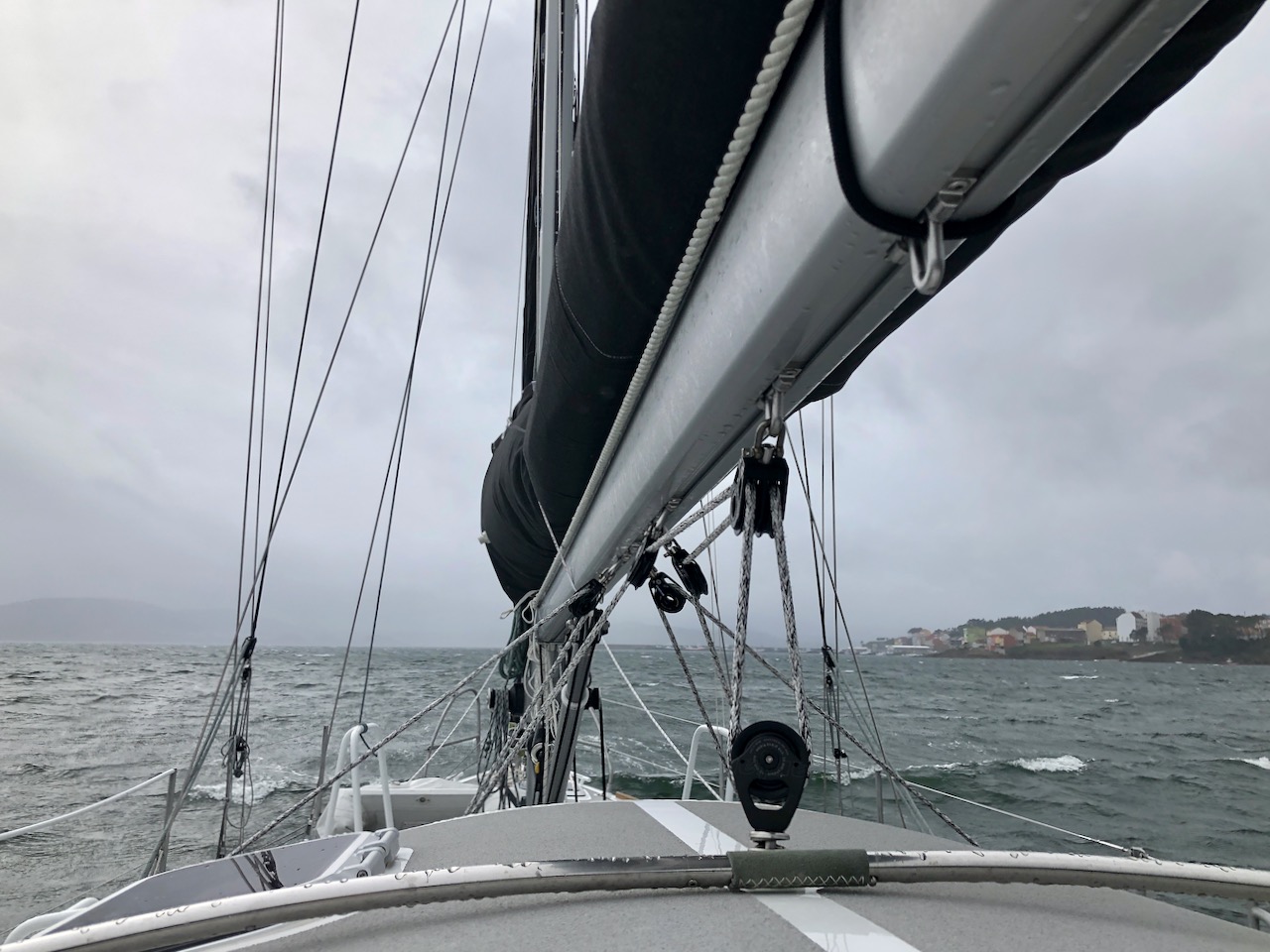
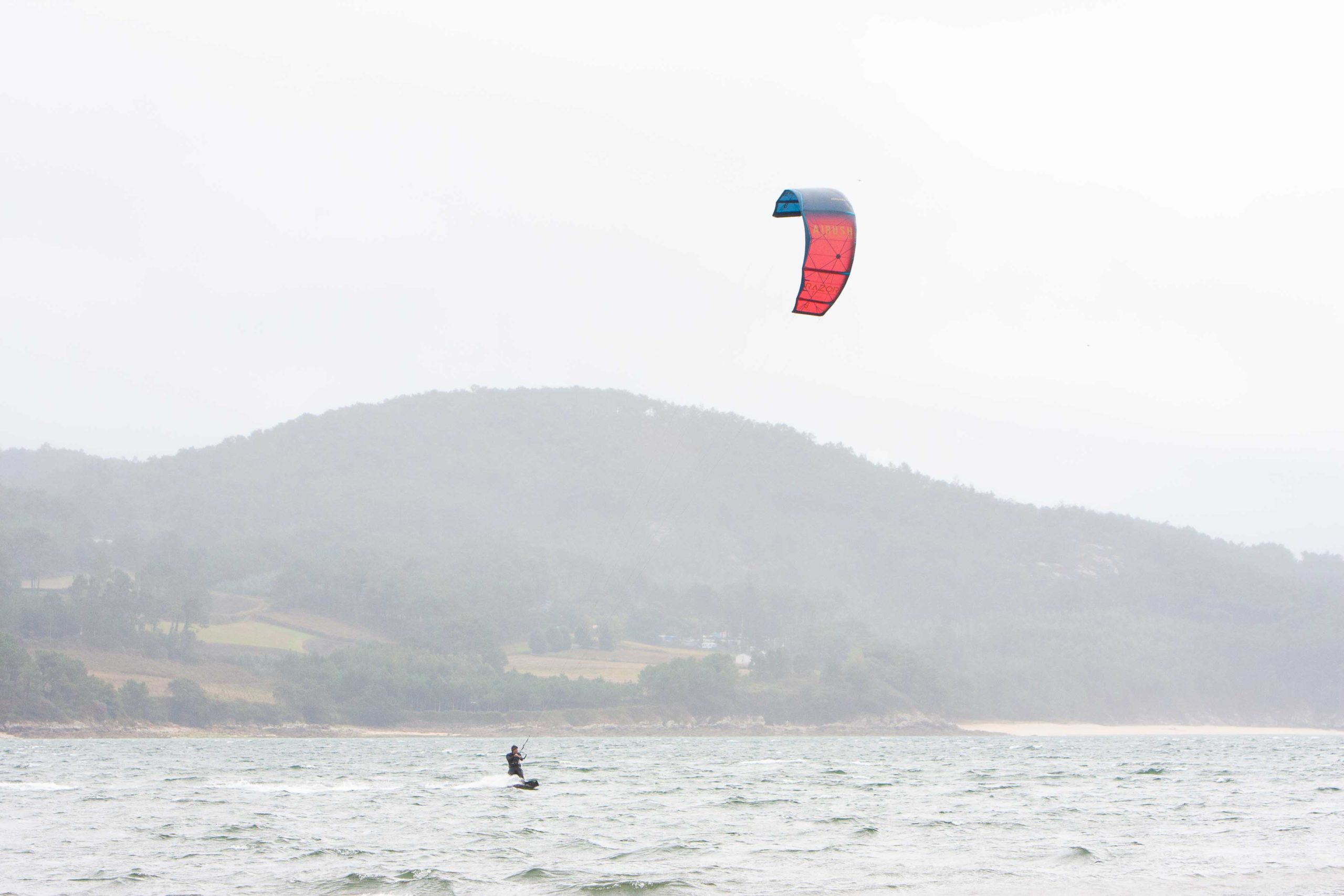
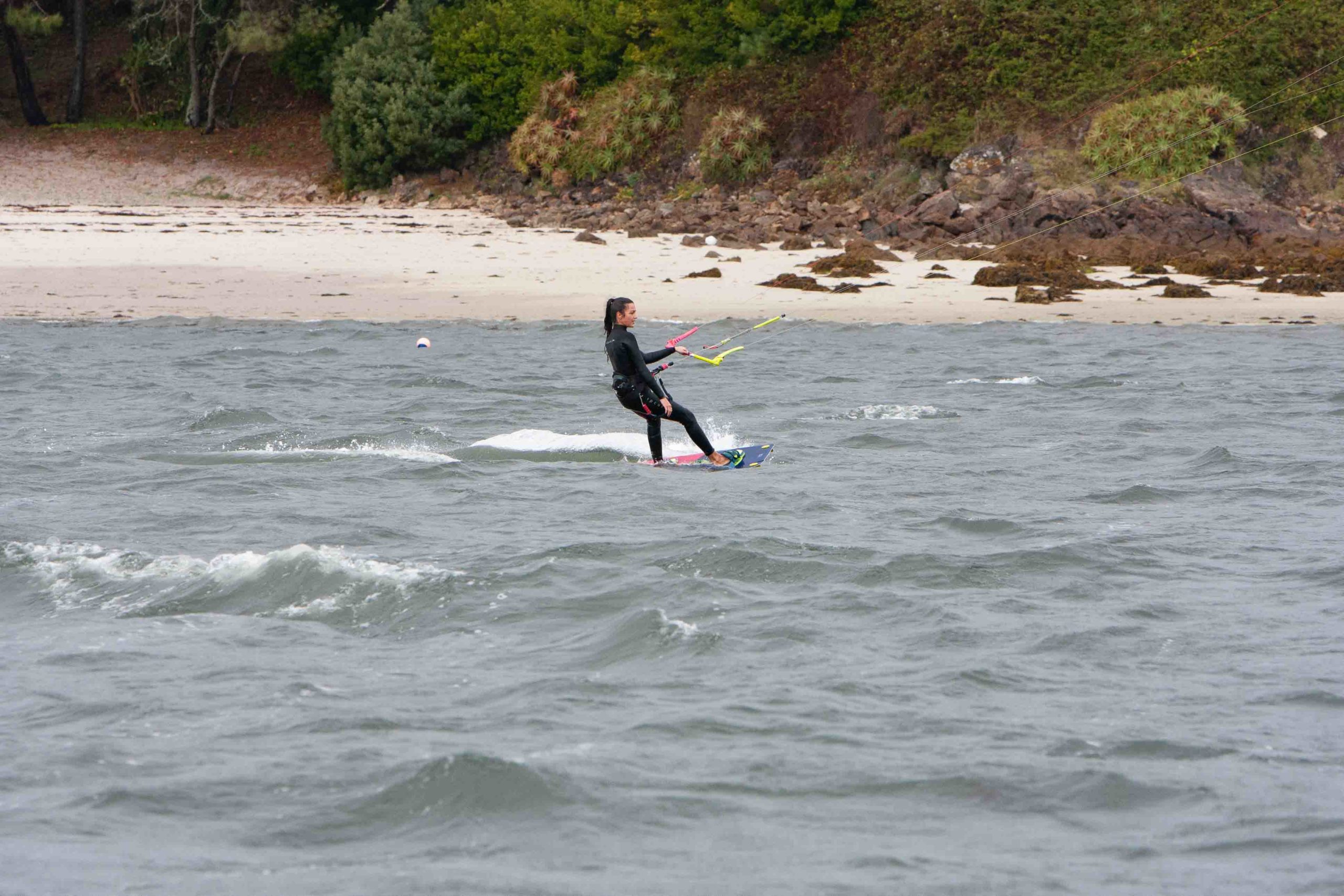
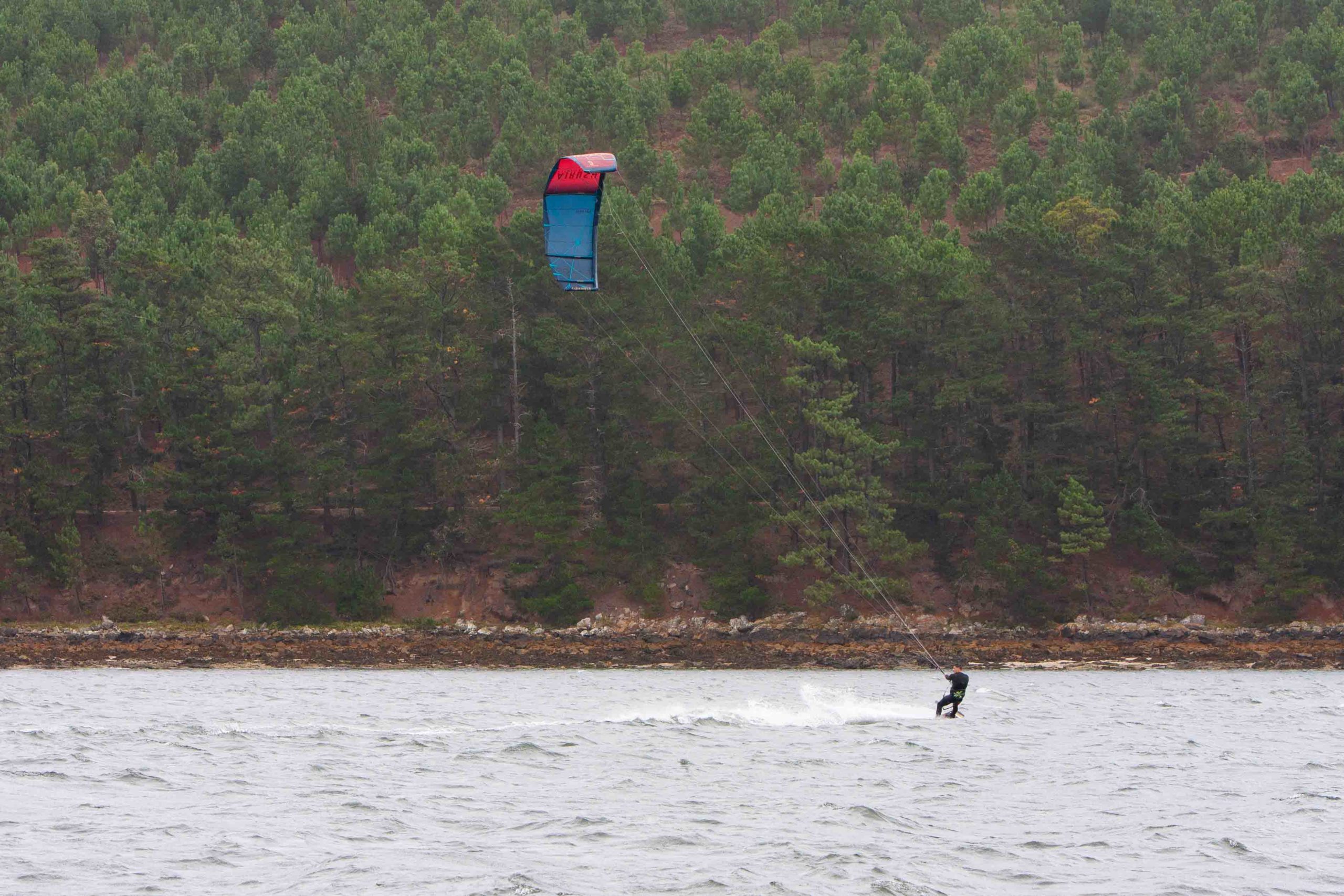
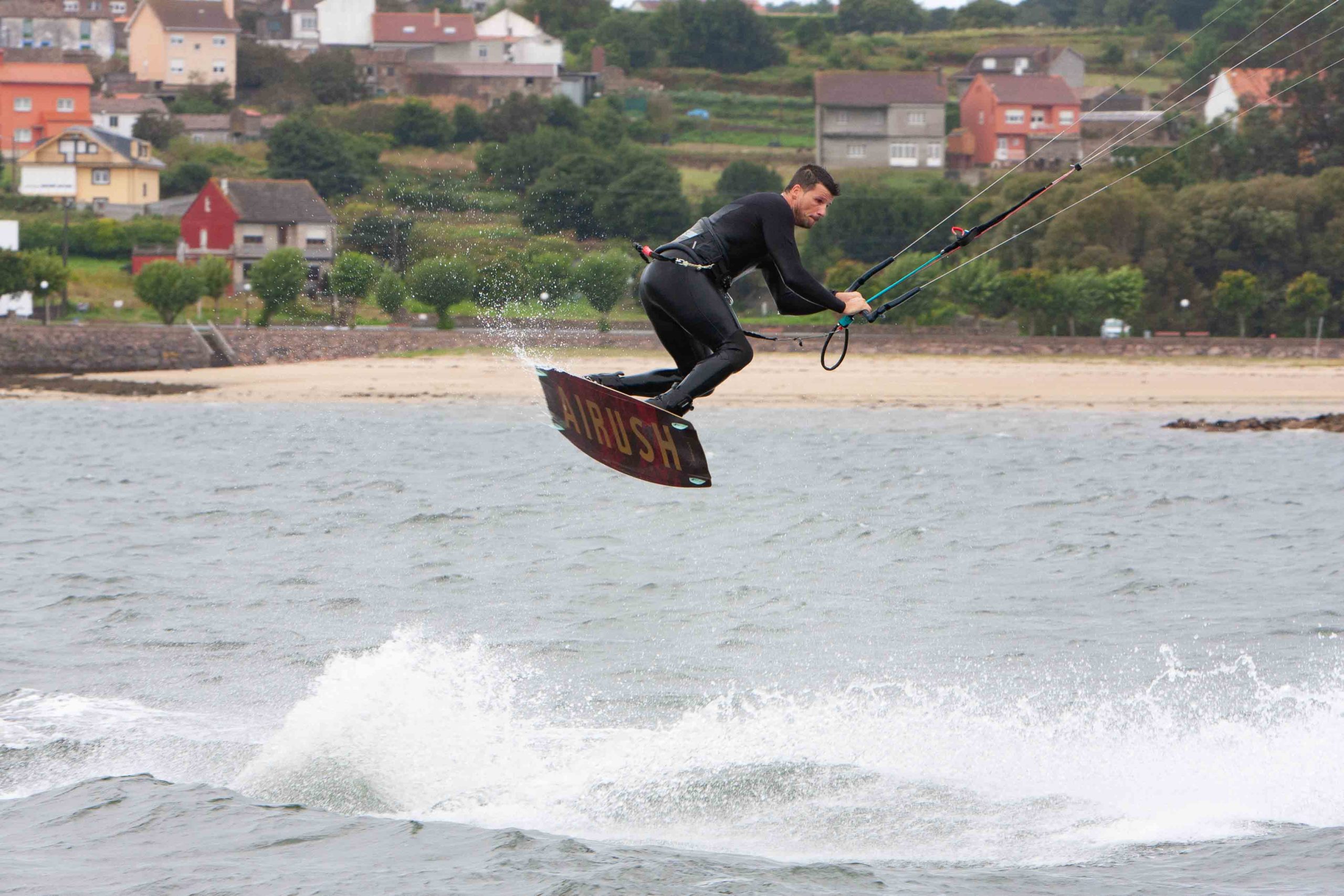
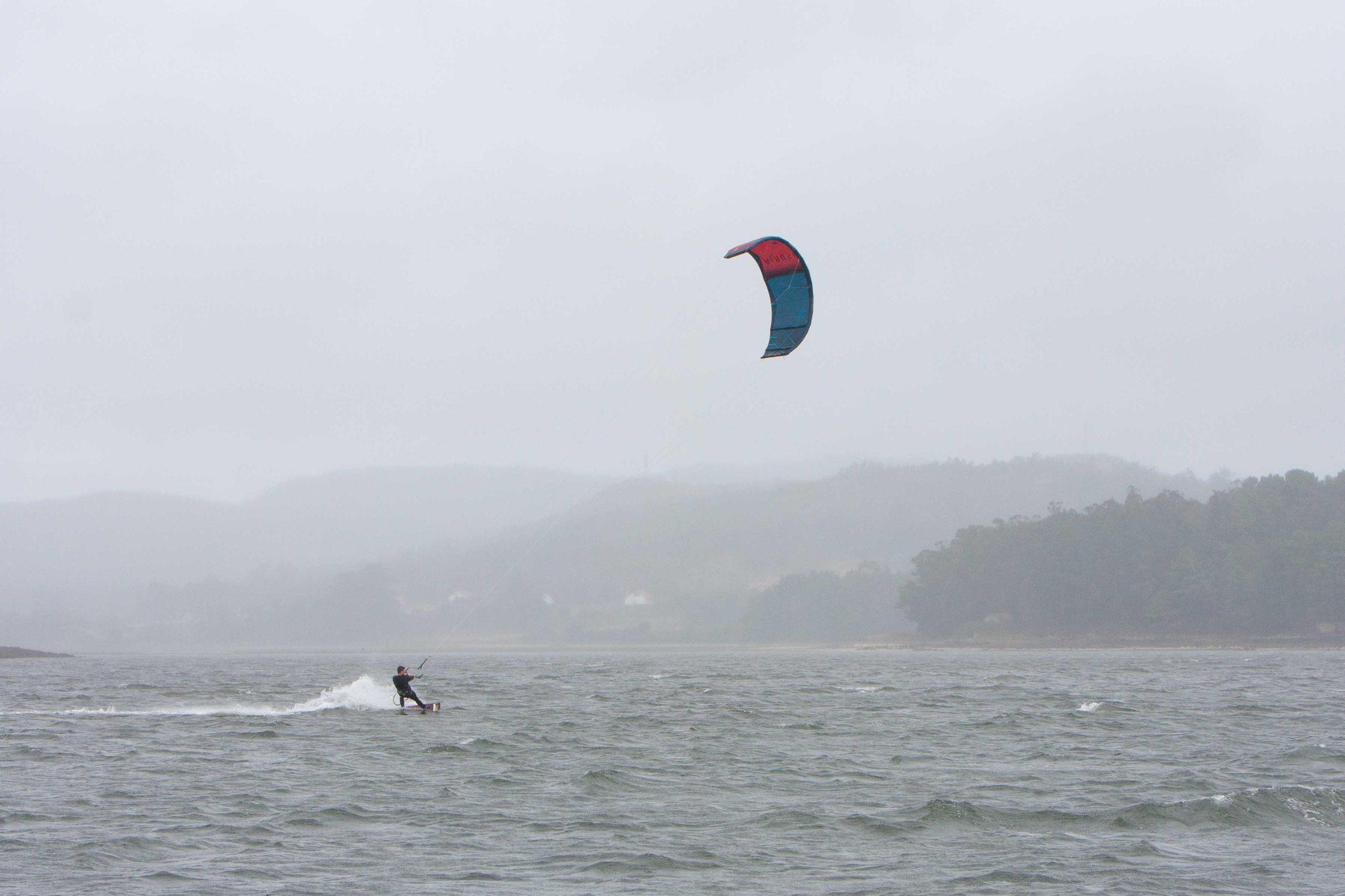
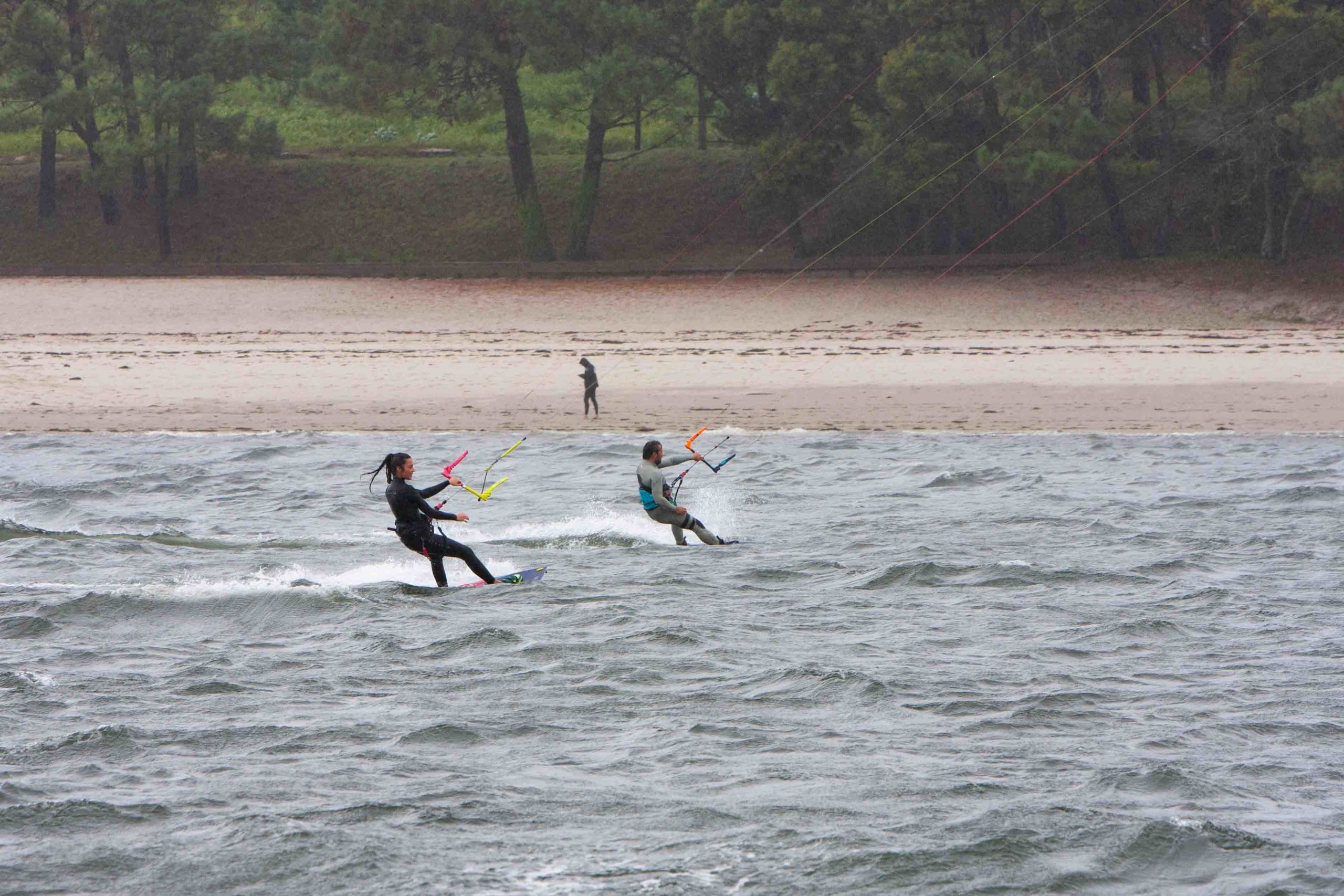
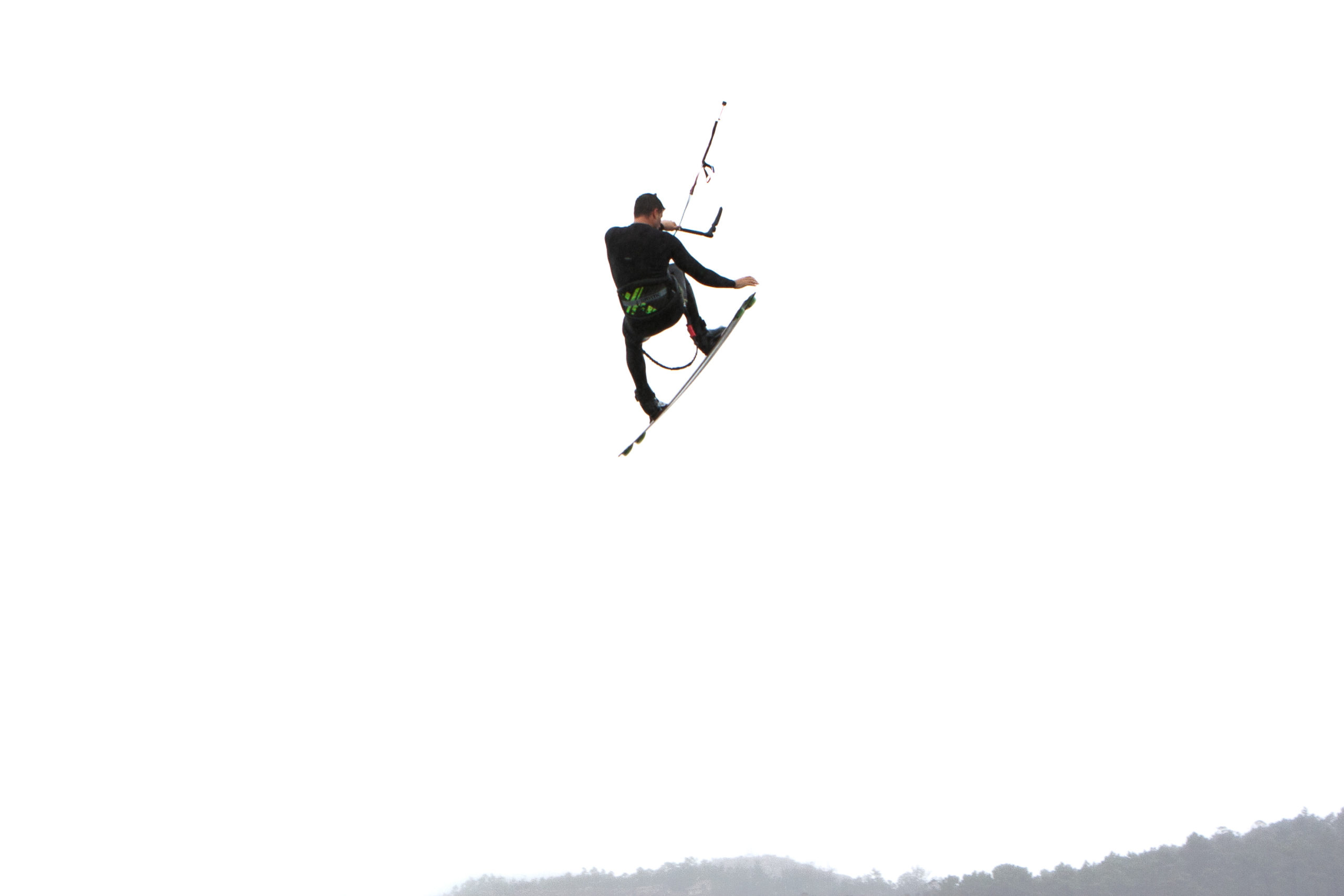
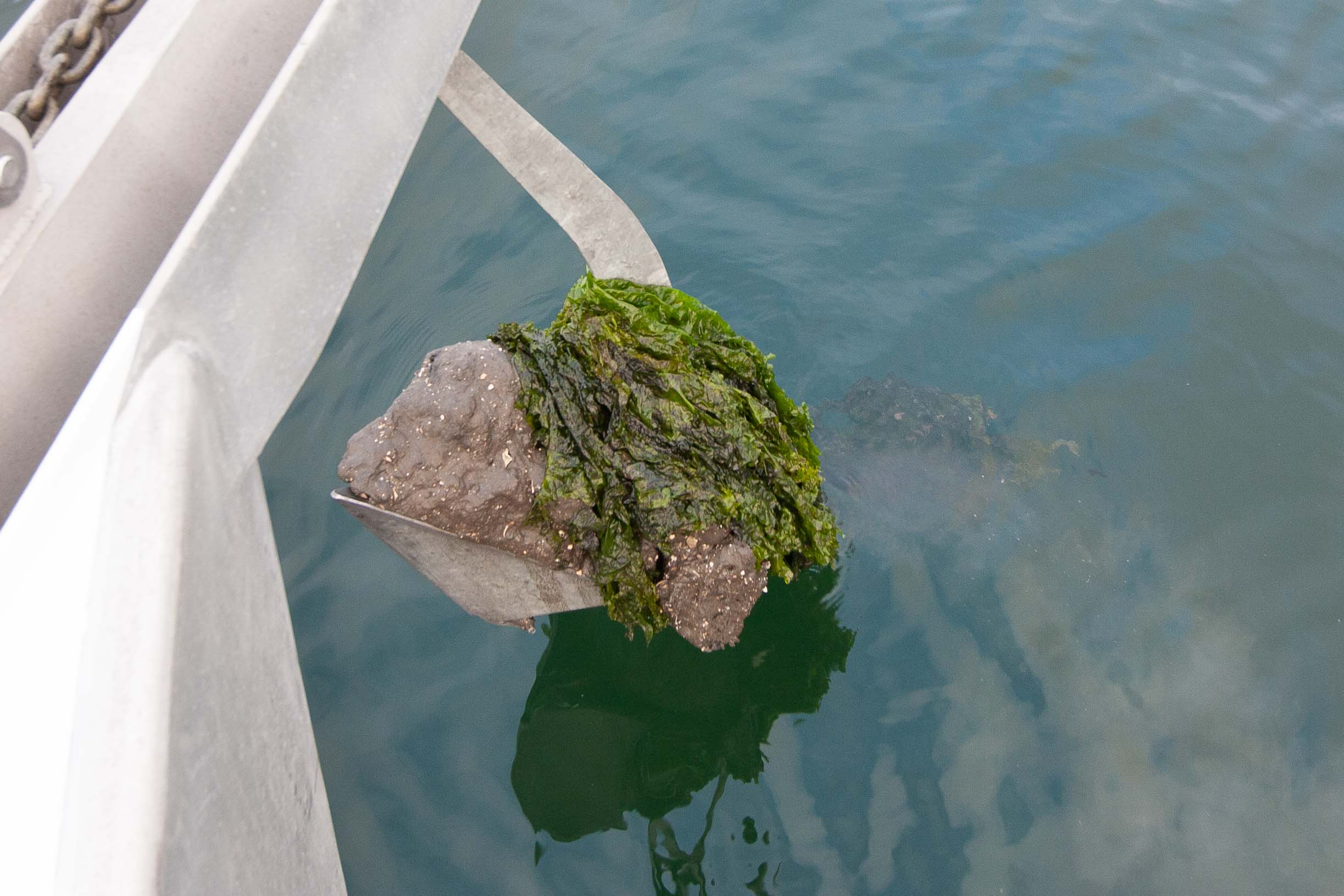
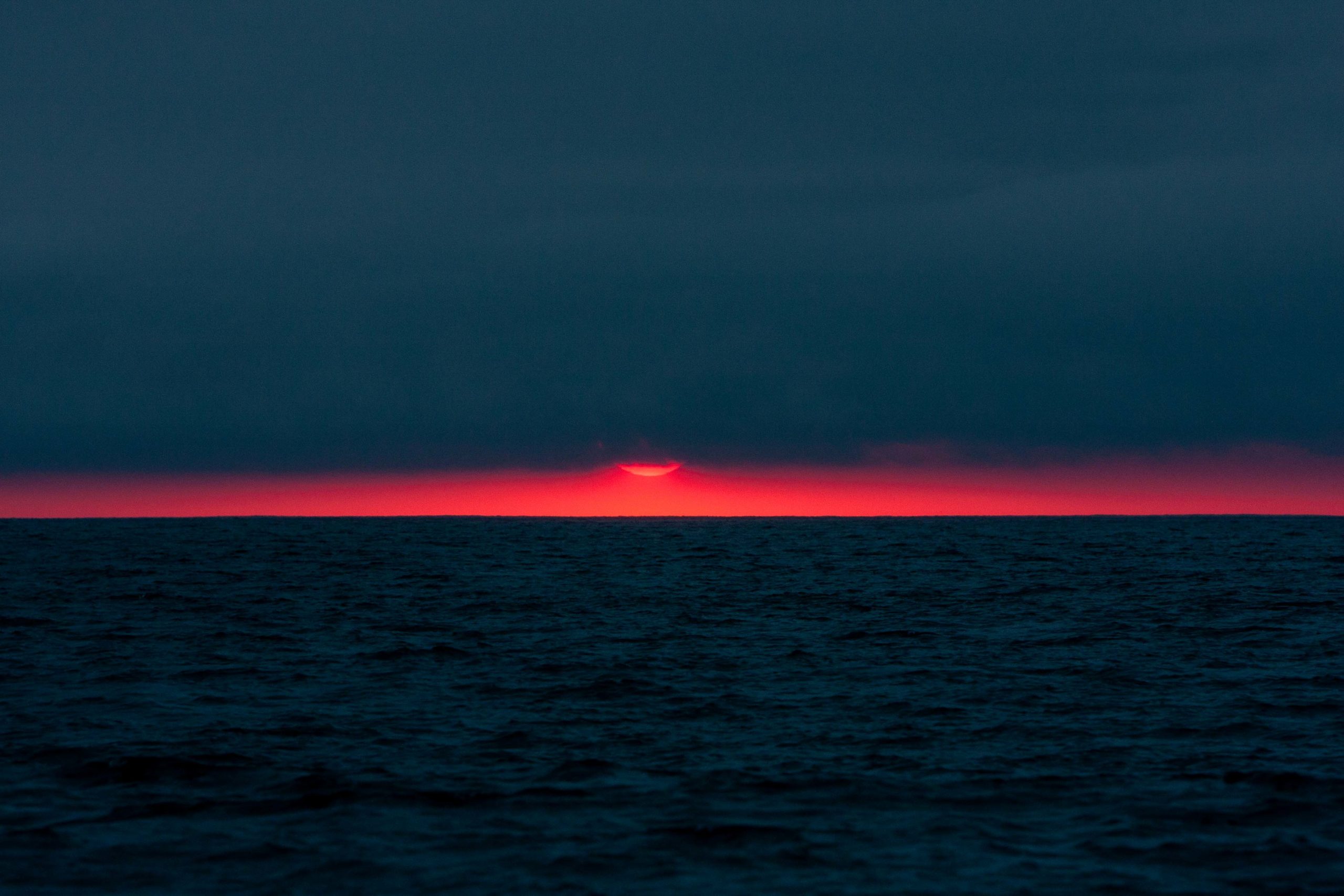
Love this post!!!
Thank you! 🙂
Love the pictures!!
Gracias! 🙂